EDITION2 EDITION2

TV
Sharlotte Thou
Eliz So
Lucy Spencely
Niall Fleming

Kerry Jiang
Claire Oberdorfer
Khanh Linh (Kaylie) Nguyen
Bohong Sun
Sarah Patience
Yulia Liu
Kaz Marsden
Benjamin Springhall
Content
Aala Cheema
Manny Singh
Luca Ittimani
Perpetual Nkatiaa Boadu
Ruby Smuskowitz
Holly McDonell
Claudia Hunt
Emmanuelle Dunn Lewis
Olivia Chollet
Lara Connolly
Zoe Christofides
Daniel Pavlich
Radio
Maya Johnson
Nat Johnstone
Alexander An
Bridget Fredericks
Natasha Kie
Cate Armstrong
Punit Deshwal
Art
Max Macfarlane
Xuming Du
Hassan Alanzi
Cynthia Weng
Vera Tan
Amanda Lim
Fuz Buckley
Bob Fang
Management
Photography
Chris Jackson
Hima Panaganti
Benjamin Van Der Niet
Events
Jeffrey Liang
Arabella Ritchie
Social Media
Brianna Collett
News
Rosie Welsh
Zelda Smith
Dina Luate-Wani
Sophie Hilton
James Donnelly
Raida Chowdhury
Shebani Jeyakumar
Eleanor Rowland
Holly Johnson
Jasper Harris
Sam Kearney
Siobhan Perry
Cover art was created
By Bob Fang

1.
Art by Vera Tan
-
Art by Jasmin Small
Letter from the Editor: Question Everything
Universities should be places of enquiry, investigation and questions. Not a place where knowledge is necessarily fed to us, but where students cultivate the skills to ask the right question, at the right time, and to the right person.
It is when we do not question the events and decisions around us that we give way to forces of power. Complicity and obedience are the bread and butter, not only of autocratic regimes, but also of simple institutional malfeasance and abuse.
The robodebt inquiry, which continues to plod along, reflects this. Every person brought before the inquiry reveals a hidden culture, flourishing beneath the public service’s unthinking, unquestioning obedience. Yet, the very principle of robodebt, of oppressing and abusing the poor, rests on a raft of unanswered questions about humanity, kindness, and what it takes to survive in life. The inquiry began with the oldest of questions, which ought to drive us, “is this right?”

Universities are no longer places of enquiry. Investigations and questions are asked too infrequently. We may learn and study in class, but the big questions are no longer asked. Activism, debate, and concern have fallen by the wayside, lost somewhere between neverending funding cuts, and the need to sell out as the cost of living gnaws away.
There are important questions to ask of the ANU. What is happening to our degrees? Why do we, the students, the public, or the customers, have no say in the direction of our learning and of future generations’ learning? Why do our residences cost so much and why do we have so few rights when we live in them?
The ANU functions on the formula of not answering student questions. We still do not have a clear answer as to why the lock-out fee was increased with no warning, no consultation and no apparent due thought. Leaving questions unanswered leaves the structures and principles of immoral decisions intact and unchallenged. True answers are not single sentences, and they reflect the hierarchy of decision-making. An unanswered question is weaponised incompetence.
But, if we are to revitalise the practice of asking the right question, then there are questions for ourselves. When did we decide to let ANU make all the decisions? Our student elections suffer from incredibly poor turnout, compared to our past, and compared to other universities across the country. When did we decide student representation didn’t matter?
Such self-interrogation should not be self-flagellation. Consciousness and turning up are vital, but so is balance. Activism sustained by the community means we do not have to devote our lives to it, but merely speak up when needs be.
Sometimes, the ANU reminds me of a hot, stifled summer, where nothing moves, not even the grass. And I think of Camus and his empty humanity:
“My degree was cut today. Or maybe yesterday, I don’t know. I received an email from the ANU: ‘Degree cut. Funeral tomorrow. Very sincerely yours.’ That doesn’t mean anything. It might have been yesterday.”
Finally, a thank you to Lizzie Fewster and Jasmin Small, who are their own forces of power. I hope you enjoy the magazine they and their teams have laboured over. Ask us, have we asked the right questions?
Alexander Lane, News Editor
2.

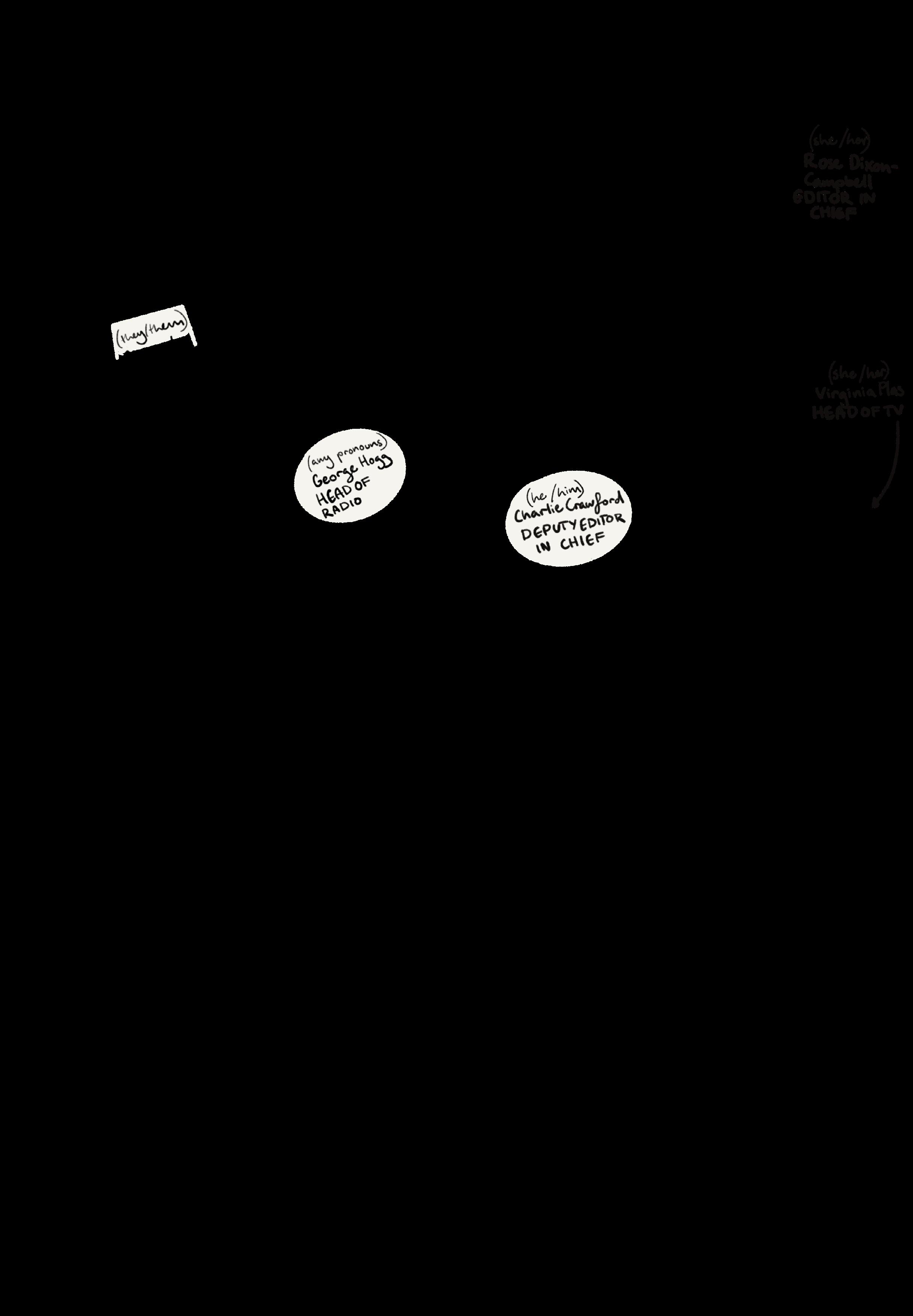
Art by Jasmin Small 3.
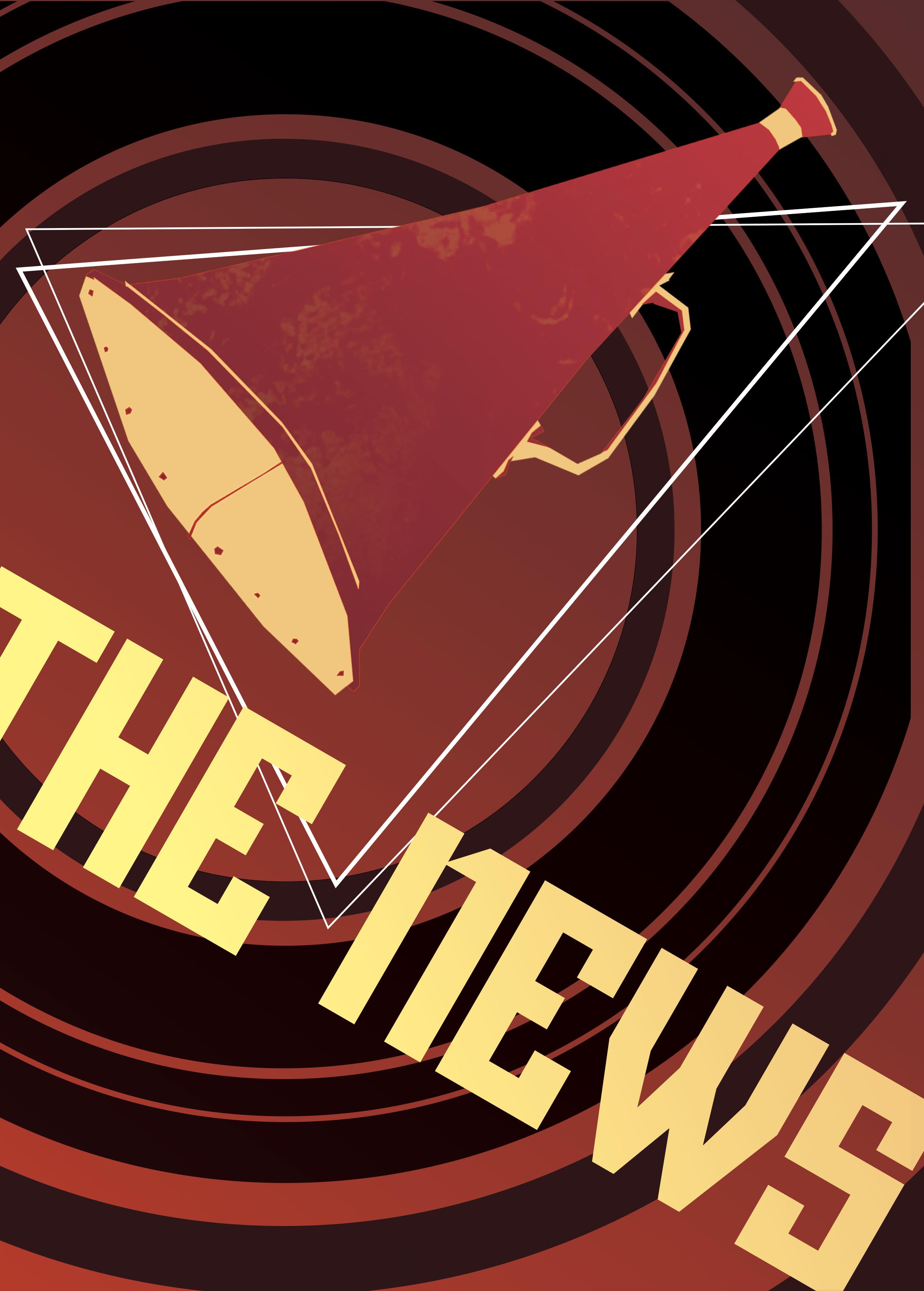
4.
Art by Max Macfarlane
Election Analysis: We Can Go Back to Pretending NSW Doesn't Exist Jasper Harris
On the 25th of March NSW, Australia’s largest state, went to the polls and decided its next government and premier. The incumbent Coalition under Dominic Perrottet had been in power for 12 years and came up against Labor under Chris Minns, looking to return to power.

On election night, Chris Minns led the Labor party to a 6.5% swing and to a minority government. The Coalition lost 13 seats to Labor and independents statewide, a defeat that leaves big questions not just for the Liberal party in NSW but around the country. Labor now runs the continent, on a state and federal level, with only Tasmania home to a Liberal government.
The Coalition minority government was only two seats short of a majority and entered into 2023 seeking a fourth term. Yet, they also carried the baggage of losing the popular leader that took them to victory previously in 2019, Gladys Berejiklian, who resigned following the opening of a corruption inquiry.
On top of this, the Nationals lost charismatic leader John Barilaro, who was later embroiled in a ‘jobs for the boys’ scandal - a controversial appointment to a plump trade envoy job in New York he helped create. Even if people in NSW generally didn’t have an issue with new leader Dominic Perrottet, there was vast, apparent apathy and a momentum for change in the electorate.
The Liberals’ plan to win the election focused on the benefits of incumbency, portraying themselves as the better economic managers, while pledging to invest more into schools and hospitals, along with increased funding for public transport like Sydney’s new metro.
Under the leadership of Chris Minns since June 2022, Labor came into the election with 36 seats, having rebuilt to that point after their 32-seat loss in 2011, when they last held government.
Labor was looking to finish rebuilding its path to power and campaigned on a simple platform of anti-privatisation of government assets, and capping tolls in line with a broader cost of living agenda. The Coalition capped public sector worker wage rises at 3 percent, and Labor promised to repeal that, along with promising further funding for new schools, hospitals, and public transport. Labor also plans to invest $1 billion in a new government-owned body to fund renewable energy projects.
5.
Art by Jasmin Small
Art by Jasmin Small
Labor’s path to victory on election night was startling. With a swing of over 6%, Labor won many of the most marginal seats in the west and south of Sydney, and the South coast, building off the Bega byelection win last year. On the ABC’s election night coverage, just two and half hours after counting had started, the data was in, and there was no path for the Coalition back to power. However, despite the swing, it is not a resounding victory, as Labor has fallen two seats short of a majority government.
The big takeaway from election night was the Coalition’s story. Another major blow for the Liberal party, you now have to cross a sea to find a Liberal jurisdiction.
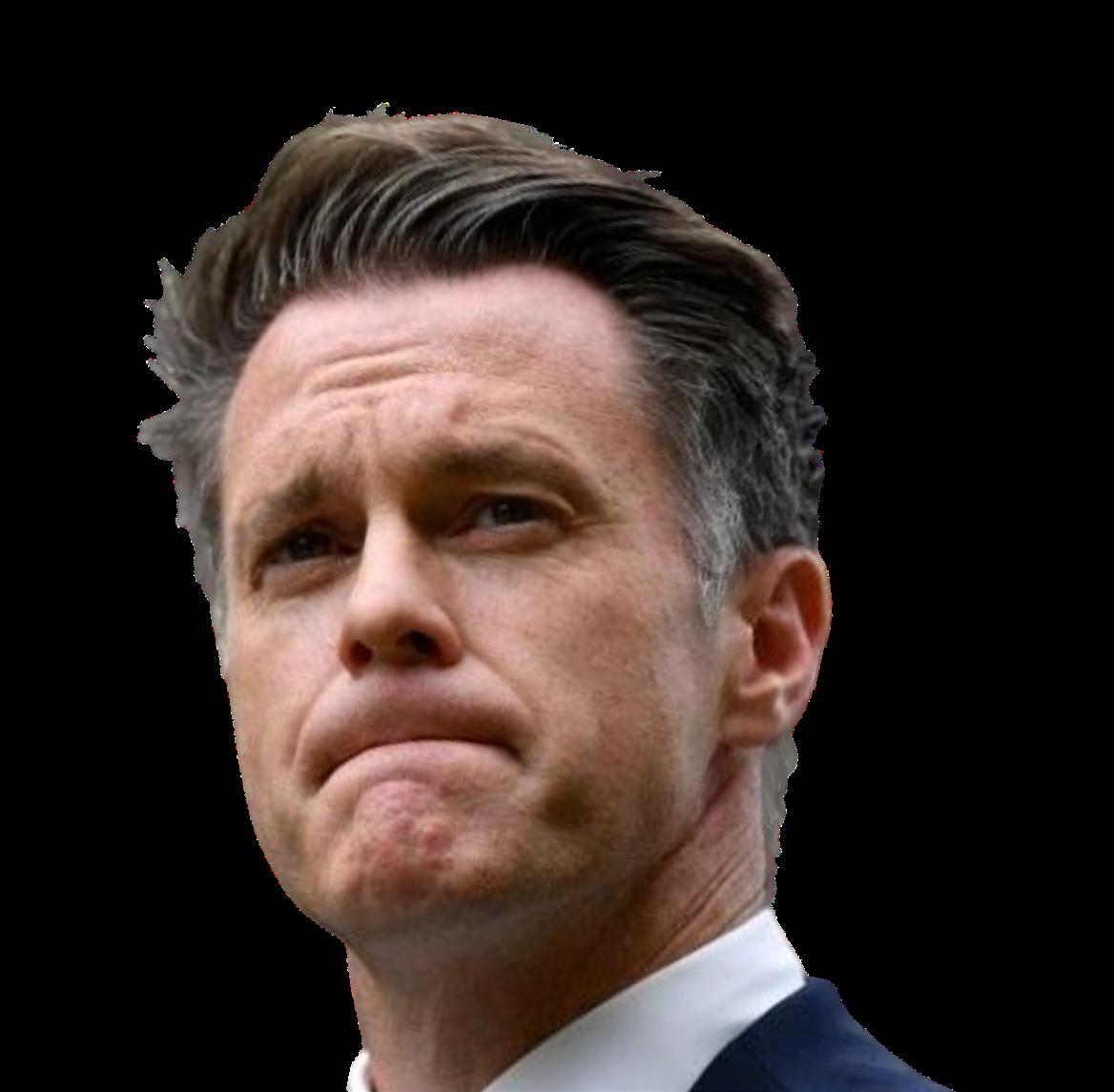
This means there is now a national issue for the Liberal ‘brand’. Dominic Perrottet resigned as leader of the NSW Liberals, and there’s now talk of a possible move to federal politics for him. The future discussion will focus on what the Liberals need to do after such resounding defeats across the country. Do they move to the centre to get back their metropolitan ‘heartland’ seats, like Kooyong, or North Sydney? Do they move further to the right as Peter Dutton and others in the party want? Right now though, the party of Menzies is struggling to attract a broad enough spread of voters to win back power anywhere.
The Nationals lost two seats in the election and have received another notice that they are falling out of favour with the rural electorates they traditionally represent. With Labor and other independents taking seats away from them, there is a need for a revamp among the nationals as to what the party stands for, as they can no longer bank on being the only country-focused political party.
With the Aston by-election coming up in Melbourne, in what should be one of the safest Liberal seats, there will be a big test for Peter Dutton’s leadership of the Liberals. For the Liberals to win again, there has to be a significant shift in focus back to core values and addressing the issues that led them to tumble from power all over the country. What exactly those core values are, though, remains contested.
Labor, for its part, now has momentum nationally. Though it occupies the traditional “left” of mainstream politics, the Greens and other progressive independents continue to challenge Labor and its more centrist policies. With the Liberals out of contention for the moment, the question is, will they go further on new policies? Will they revisit old challenges like capital gains and negative gearing? Will there be further changes to combat climate change?
Now in 2023, this feels like a new time in Australian politics. Between Labor so dominantly in control nationally, the Liberals having been so resoundingly defeated up and down the ballot, and the rise of minor parties and independents, it’s never been a more exciting time to follow politics. What happens next will be anyone’s guess. But at least we don’t have to read about NSW anymore.
6.
FOI Reveals Details of Ex-Senator George Brandis' Appointment as Professor Sophie Hilton

A Freedom of Information (FOI) request has revealed details about the appointment of former senator, George Brandis, as Professor in the Practice at the ANU in July 2022.
Brandis, who served as a Liberal Senator for Queensland until 2018, was a cabinet minister under the Abbott and Turnbull governments, Attorney General from 2013-2017 and most recently as High Commissioner to the United Kingdom. His appointment at ANU consists of a three year role as Professor in the Practice of National Security, Law and Policy, split between the National Security College and College of Law.
The email chain included in the FOI release reveals that his appointment was driven personally by Brian Schmidt, beginning with the Vice-Chancellor proposing his hire to other senior ANU staff. Schmidt proposed the appointment was beneficial to the ANU on the basis of Brandis’ ability to help “...us [ANU] better understand and engage the political process” and “...help us [ANU] raise money…through philanthropy.”
Brandis’ appointment also appears to have been well under way by the time the first email was sent. Brandis himself told an ANU employee: “...our [Brandis and Schmidt] discussions have been fairly advanced in terms of sorting out the details.”
Schmidt deemed the appointment “high priority”, and it was done without advertisement or the use of a selection committee. The documents cite “Identified Position” as the reason for doing so.
From: FOI Document 202200031
According to ANU’s appointment procedure, all appointments must be completed in a “fair and transparent manner” and are typically advertised, with some exceptions, including under the ‘Identified Position’ procedure. This procedure defines such a position as one “...with an essential personal requirement with the aim of promoting equality of opportunity for disadvantaged groups.” It goes on to list the circumstances in which positions may be presented as Identified Positions:
7.
“1. as part of special measures aimed at increasing representation of Aboriginal and/ or Torres Strait Islander staff to meet the employment targets under the ANU Enterprise Agreement; and
2. as part of special measures aimed at increasing representation of women in areas of the University where women are under-represented.”
Brandis is neither a woman nor of Aboriginal and/or Torres Strait Island descent.
Despite the recruitment documentation, a spokesperson for ANU has attested that Brandis was not appointed via the Identified Position policy, but “...at the discretion of the University”. The university has commented that while “not typical”, these appointments are “not uncommon”, noting that there are more than 10 Professors in the Practice at ANU.
They have highlighted that the justification for the hire is strongly rooted in Brandis’ extensive professional experience - political and diplomatic - making him “...amply qualified for the role.”
In his political career, Brandis was involved in several controversies, including the 2013 approval of an ASIO raid on the office of East-Timor representative Bernard Collaery, and the use of $20,000 of taxpayer money to build bookshelves for his parliamentary office.

Brandis also asserted, in relation to accusations against Andrew Bolt of racial vilification, that “... people do have a right to be bigots.” Online, the ANU states that “We do not tolerate or accept any form of racism or bigotry.”
While the FOI documents make reference to a donation to the University to create a Professor in the Practice position, the ANU has since confirmed that Brandis will be paid not from a donation but from central administration’s budget.
ANU is also entitled to hire without advertisement under an “exceptional case” which includes hiring by invitation, although approval must still be sought in writing to Human Resources under clause nineteen of the procedure. This writing, if it exists, is not included within the FOI release which covers documents “...related to the appointment of George Brandis as a professor at ANU” including “...contact between Mr Brandis and the University regarding any employment opportunity.”
For students, the FOI raises the question of whether the ANU hires high-profile professors for the benefit of the University’s finances and lobbying. It remains unclear which employment policy the ANU used when hiring Brandis beyond its own discretion.
The FOI also highlights the power of the Vice-Chancellor to personally fast-track appointments, at a time when the revolving door between politicians and public appointments remains a
8.
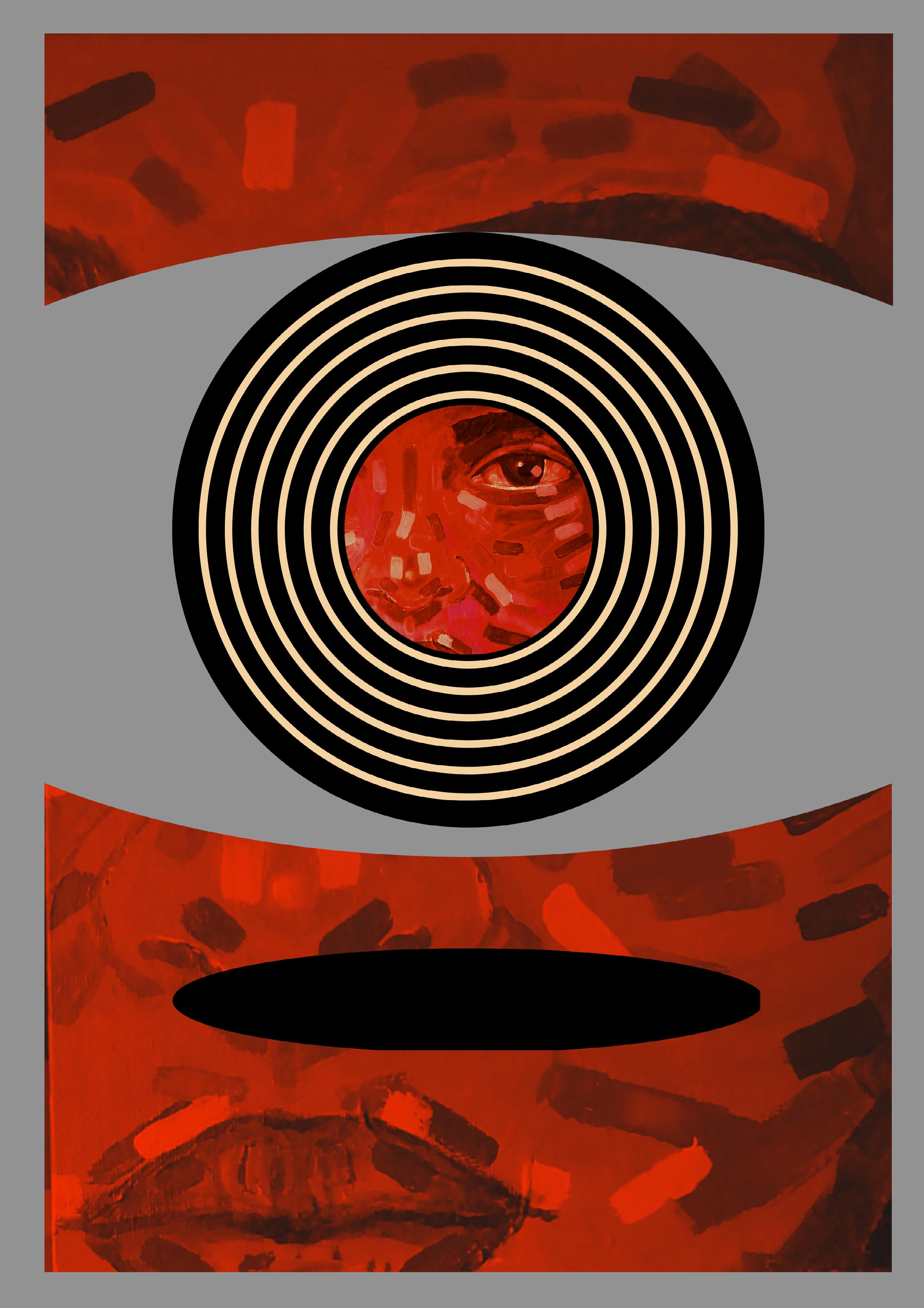
9. Art by Xuming Du
"Without Protests, We Have Nothing" - A Look into ANU's Student Activism Raida
Chowdhury
Content Warning: Oppression, misogyny, homophobia, racial discrimination, sexual assault and sexual harassment (SASH) and police discrimination
On the 19th of April, 1965, Prime Minister Robert Menzies announced the deployment of Australian combat troops to Vietnam. In July of the same year, 800 students attended the first ever teach-in protest at ANU.
In a 1968 edition, Woroni would later recall, “Menzies announced that Australian troops would be sent to Vietnam and the first of the huge ANU demonstrations began. It was rapidly being realised that the ANU’s position in the heart of the National Capital afforded an instant and massive press coverage to the activities of the ANUSA and our impact upon world events assured.”
Throughout the years, ANU students would channel the same enthusiasm for activism. By 1976, after months of demand and protest, the University offered the first Women’s Studies course. In 1978, Women’s Officer Gaby wrote in her Officer’s report, “I hope campus activists realise how difficult it is for women to do anything worthwhile—because as soon as we hit the scene we’re attacked”. Feminist activism would remain resilient, since the next year saw “Wimmin on Campus”, the first feminist club being established.
In 1989, the Hawke government introduced the Higher Education Contribution Scheme (HECs) and the National Union of Students launched the first of many campaigns against it. The Tjabal Indigenous Higher Education Center opened the same year. The ‘90s would see campaigns against increasing fees and

course cuts and the first ever pro-choice awareness campaigns held by ANU Women’s Officer Kate Harriden.
By the 2000s, students started protesting against refugee camps and established the ANU Refugee Action Collective. A student declared in a Woroni opinion piece, “The protests have begun. They will escalate and they will continue until all refugees are free.”
In the 2010s, student activism steered towards environmentalism and pride protests. After 500 pride posters were torn down on campus, students from the Queer* Department dressed in camouflage and staged a stakeout to defend and re-decorate posters. In 2013, the Fossil Fuel Divestment campaigns began and by 2014, after protests and campaigns, the ANU partially divested from the fossil fuel sector.
In recent years, the ANU student body participated in an average of seven protests each year. Protests regarding the University’s management of courses and student wellbeing, organised by ANUSA departments, tend to have the highest student turnout. Woroni spoke to Women’s Officer Phoebe Denham (they/them) who explained, “Activism is integral to the role of Officer. It ranks highly (with service provision) since community work and activism go hand in hand.”
10.
Art by Jasmin Small
They also revealed that historically Departments autonomously select protest issues and political actions, while the ANUSA executive provides logistical support to the initiatives, including financial aid and resource provision, such as first-aid. Departments often organise protests that relate to student wellbeing issues, including protests against campus racism and sexual assault and harassment (SASH), usually inspired by Department reports. However, this can lead to burn-out amongst Department staff. At the final SRC last year, many Department Officers condemned the workload and burnout that autonomous activism can cause.
ANUSA Education Officer Beatrice Tucker (they/them) acknowledged that ANUSA has lacked a whole-of-union approach to activism and has “attempted to solve issues bureaucratically, behind closed doors in meetings with [university] management, rather than through popular support and activism.”
On-campus groups, such as Socialist Alternative, often organise on-campus protests, including protests for climate action, such as the National Day of Action. The National Union of Students (NUS), which ANUSA is affiliated with, also organises protests on issues such as climate change and abortion rights. Protests against course cuts are organised by the college students themselves in conjunction with the ANUSA Education Committee, such as the protests against CASS program disestablishments last year.
Mass advertising of campaigns and the effort of organisers both help to increase student turnout. An ANU student who attended the 2023 Invasion Day protest and the International Women’s Day protest told Woroni, “There are always posters around campus for upcoming protests and…emails from ANUSA [with invitations] to join protests.”
Phoebe explained protests can be inexpensive with the main costs being posters and banners. However, the labour can be taxing, especially for department officers who spend time organising protests. Beatrice told Woroni, “I had been working with my classmates for
the School of Arts and Design (SOAD) for 18 months…raising expectations for what is possible, regularly discussing similar fights and successful organising campaigns.”
The SOAD had three years of closed workshops and online attendances, even after the ANU and ACT government both lifted restrictions. After a three-day sit-in organised by the students, at the main foyer of SOAD, SOAD management allowed students access to low risk studios on weekdays.
Student activism has increased in the past decade due to accessible organising through social media. However, consequences remain severe. Luke Harrison recalls feeling “unsafe” at a protest against the corporatisation of pride, “The police have a long history of oppressing queer people, and they kept snickering and sneering at us.”
In 2014, then Foreign Affairs Minister Julie Bishop was met with thirty student protestors when she came to speak on campus. The protests were part of a bigger opposition to the Abbott government’s university deregulation initiatives. Police arrested three students despite protesters claiming to be nonviolent and pleading that the broken window of Bishop’s car was an accident. In 2016, ANU students were arrested for blocking a coal train from NSW’s Whitehaven’s Maules Creek Mine, while protesting the climate effects of coal mining.
This year in February, after protesting against the rising cost of housing, the interest rate and bank profits in front of the RBA, Cherish Kuelhmann, a UNSW student was arrested and taken into custody at midnight before being set strict bail conditions. The University of Sydney also suspended students Maddie Clarke and Deaglan Godwin for their involvement in a protest against Malcom Turnbull when the former PM visited the USYD campus. ANUSA’s first Ordinary General Meeting of this year echoed concerns of whether similar circumstances could occur for ANU student protestors, as a motion calling for ANUSA’s support for the two students passed unanimously.
11.
Although peaceful protests are not illegal, police can arrest students with charges such as obstruction, trespass, offensive behaviour and property damage at protests. Arrest records can be detrimental to a student’s career, since many jobs require police clearances. Graduates may find they are denied opportunities, promotions, or are subjected to prejudice for their arrest record. This is of particular concern at the ANU, where many students seek to work in fields requiring government clearance. For international students, arrests can lead to the termination of visas and deportation.
According to the Australian Human Rights Commission, Indigenous Australians are 17.3 times more likely to be arrested than nonIndigenous people, especially in situations with assault occasioning no harm, such as offensive language or resisting police arrest. These are charges often used to make arrests at protests. Attending protests also threatens individual anonymity as Denham explains, “It’s scary stuff (to see) photos of other people at protests (and) seeing yourself.”
In light of such statistics, the ANUSA/ANU Law Reform and Social Justice Legal Observer program launched at the Invasion Day protests this year. The program involves training by staff from Legal Aid ACT to observe interactions between protestors and police enforcements at protests and detect any encroachment on the right to protest.
Trained lawyers and students will attend protests to observe and report the conduct of police and private security. Luke Harrison also explained, “Police Liaisons who are [at protests] are trained to engage with police on behalf of protestors and Marshalls who are trained to direct the crowd away from dangers and in directions of the protests [are also present]”. Departments have also requested protestors to wear face masks at protests, for health reasons and to anonymise identities. The Women’s Department also co-operated with SAlt to organise a long distance, bird’s eye camera for the International Women’s day protest.
Despite challenges, student activism is at the core of students and departments. An ANU student told Woroni they attended protests because, “It was invigorating and you feel like you’re a part of something very powerful. The chants, the posters, the walking together, it feels like something bigger than life.”
Tucker compares student activism to “detonators of success,” saying student activism provides, “students with tools to take with them into the future to fight [for] their own rights as workers.” Denham stresses the importance of “showing up when you can,” for students who cannot attend protests. They explained, “I feel a lot of solidarity with other students and I know I have the student body behind me.” An ANU student protestor emphasised, “Without protests, we have nothing. Changes may not be tangible and visual yet, but protests are the only way to create change.”
If you or anyone you know is affected by the content of this piece, please contact one of the support services below:
Beyond Blue
1300 22 4636
24/7 – Depression, anxiety and suicide prevention
1800 RESPECT
1800 737 732
24/7 – National sexual assault, domestic and family violence counselling service.
Editor’s note: the history of student activism listed here is not comprehensive. For a more in-depth timeline, refer to the ANU website, Woroni archives, Marie Reay wall and the banner along the BKSS railing.
12.
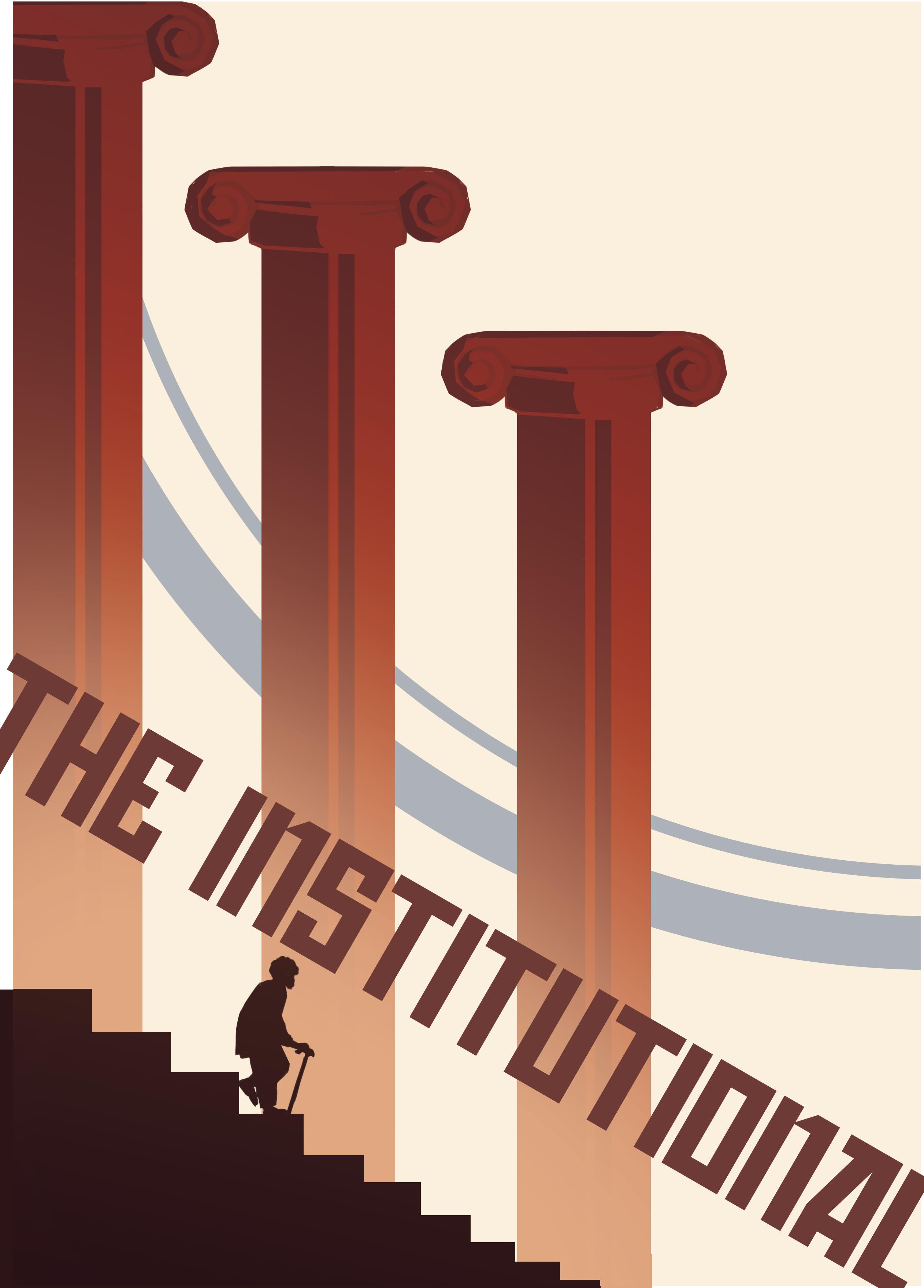
13.
Art by Max Macfarlane
Art by Jasmin Smal
Charlie Crawford
In his desire to maximise efficiency within the prison system with minimal guards, Jeremy Bentham settled on a structure that he would call the ‘Panopticon’. A central tower of guards surrounded by a ring of prison cells facing inwards, Bentham argues that prisoners begin to discipline themselves under the idea that someone could always be watching – to the point where the guards needn’t be. Over time, what was simply a model of efficient prison management, has become a symbol for the never-ending expansion of infinite measures of social control. In the same way that you stop at a red light even when no one is around, society has normalised these mechanisms of selfregulation that you don’t even notice you’ve made a habit of.
Whilst some look more prison shaped than others (sorry Ursies), it’s hard to ignore the similarities between Bentham’s panopticon and the social dynamics of living at college. There are very few other scenarios in life in which you will live in a fun little Soviet-esque commune of 300+ people all within 100 metres of one another. It’s almost a given, then, that you begin to make observations about the people that you see everyday. First, you’re intentionally trying to learn more about them, then you’re naturally picking up what they talk about and how they do it. It slowly becomes more personal as you learn their mannerisms and quirks, until all of a sudden, you’re an expert at reading their body language even if you didn’t intend to be. College forces you to speed-run relationships.

14.
This has its benefits. I know Jess is having a bad day if she turns down an offer for tea in the dining hall; I know Harry has classes all day Tuesday because that’s the day he’s not at lunch. But it also presents its own very unique set of disadvantages. The eventual realisation of how well you can understand the people around you leads to the inevitable conclusion that those people are also seeing you under the very same spotlight. The knowledge that at any one point, someone can understand or recognise you in ways that may forever remain unknown to you is terrifying. This is only compounded by how fast information can travel – share good news with your best friend – people you’ve never talked to before will be congratulating you at dinner. Share bad news…you get the picture. Hyper surveillance is puppeteering our interactions in a way that means all our conversations revolve around each other.
This keen awareness of just how perceived I am at any one moment has made me feel as if I have to be a perfect version of myself every time I open my door. I’ve become a person that almost demands others to know how put together I am. I portray a version of myself that I hope will be the most interesting and entertaining to those that are watching me and reflect favourably upon me as it inevitably gets passed down the gossip chain – if I slip up, the guards will notice. In an environment in which everyone is acutely aware of what everyone says and does at any moment, I’m determined to make sure people only see the version of myself that I want to put out there. Because if I do that, then I’m beating the panopticon, right? I need to have total control over the narrative people have about me, because now that I’ve gotten ahead of it, I can make sure it’s only the good stuff. Right?
I worry about what this surveillance is doing to me. Am I just tolerating it, or have I begun to ask for it?
I lap up the attention as I walk to work in my brand-new corporate chic attire (I intentionally loitered around at breakfast so people could see how responsible I looked). I mock TikToks of people videoing themselves doing good deeds (I hope that none of mine go unnoticed). It could be easy to throw away the real weight this Orwellian lifestyle can have on you, file it under “exhibits narcissistic tendencies’’ and move back onto gossiping about other people. Yet I can’t help but worry about the way this mask I’m wearing might become permanently welded to my face. More importantly, I don’t know what’s scarier – the thought that my friends can’t see through it, or that they can.
In the never-ending performance that is living at college, how is anyone supposed to feel seen when we’re made to enjoy the ordeal of keeping up appearances? I want to feel as if my relationships with the people around me mean something – like they know me – but how can I ever be sure? How can I be sure what knowing me even looks like? College is a perpetual balancing act of attempting to put on your best performance of yourself, whilst also wanting to maintain some semblance of authenticity. Are we all just patchwork caricatures of the traits we think people will find the most interesting about us? Isn’t there, too, some sincerity in that.
15.
Art by Jasmin Small
Repression, Respectability, and the Right to Protest
Carter Chryse
The author of this piece is a member of Socialist Alternative ANU

16.
Art by Jasmin Small
The last peak of protests across Australia is now some years behind us. Across Australia, the ruling class is now taking the chance to hit back.
The climate movement of 2019 and early 2020 was huge. Hundreds of thousands attended School Strike protests in late 2019. Extinction Rebellion protesters shut down traffic in major cities across the country week after week, and promised there was more to come. More than a hundred thousand rallied during the bushfires which choked Eastern Australia in smoke, calling for the sacking of Scott Morrison.
There was a frenzy of op-eds calling for calmness, politeness, respectability, getting off the streets and calling your local member. But in the face of hundreds of thousands across the country participating in loud, rowdy, angry protests, the protestations of the establishment weren’t much more than words on paper.
That’s changed now. With the ebb of the climate movement, brought to a halt under COVID-19 and now struggling to rebuild under the federal Labor government, there’s been a slew of attacks against protesters. Victimisation of all activists who dare to disrupt business as usual is climbing. I want to highlight three cases.
The most outrageous and high-profile of these is the charges placed against Violet Coco. Violet, associated with an Extinction Rebellion offshoot group, stopped a single lane of traffic on Sydney Harbor Bridge for less than half an hour. For this supposedly heinous crime, she was arrested, intermittently placed under house arrest on remand, and originally charged for 15 months with thousands in fines (the charges and penalties were dismissed on appeal). She was charged on laws introduced in NSW in 2020, which sought to punish those who block major roads or the like with up to two years jail time and/or $22,000 fines. These laws were introduced directly to intimidate and repress climate protesters blocking traffic, some tens of thousands of whom had occupied the Sydney CBD just months earlier. Awaiting trial in Brisbane are twelve other Extinction Rebellion protesters, charged with blocking roads there, where similar anti-protest laws have been in place since 2019.
It’s in the context of the ebb of the climate movement, the distaste for such disruption by the respectable establishment and sections of the protest movement, such as the organisers of School Strike for Climate, that the state feels emboldened to hit back against protesters. However, the right to disrupt and impede the very ‘business as usual’ approach that is killing the planet should absolutely be defended. There is no similar jail sentence or fine for those fossil fuel bosses who are causing the climate crisis, which is responsible for blocking the roads with floods in Lismore or bushfires across 20 million hectares in 2019. The only criticism to make of the stunt-based tactics used by Violet Coco and others associated with Extinction Rebellion is that they should be focused on drawing as many people as possible out onto the streets with them.
17.
by Vera Tan
This year, also in NSW, was the case of the arrest of Cherish Kuehlmann, a Socialist Alternative education officer from UNSW. Kuehlmann was dragged out of her home at midnight and charged with aggravated trespass – for protesting outside the Reserve Bank of Australia for about 15 minutes. Neither Cherish nor her fellow protesters at a cost of living protest in February ever entered the Reserve Bank. The charge was considered “aggravated” as it “disrupted the flow of business” for the 15 minutes – as Cherish said, “apparently, [sic] I’ve supposed to have stopped them from raising interest rates further”. When she was released on bail, the cops tried to implement restrictions to prevent her from attending protests at Sydney Town Hall, in a clear attempt at intimidation and an attack on the right to protest. These were ultimately overturned, as there does not (yet) exist any law preventing people from coming back to protest.
The laws Kuehlmann was arrested under were introduced in 2016, specifically to target disruptive climate activists, so it’s no coincidence they’re being employed in this recent suite of attacks. The calculation that is being made by NSW Police and the state is the same: without a movement and the full support of the left for disruptive protests, such laws can be used to victimise activists without backlash. Their judgement was largely correct: in an appalling turn, the UNSW SRC, of which Cherish is Education Officer, voted against a motion calling for the charges to be dropped against her.
Lastly, I want to go to the example of the suspension of two members of Socialist Alternative from the University of Sydney. Former University of Sydney Education Officers Deaglan Godwin and Maddie Clark were suspended this year for their part in leading a 2022 protest against former Australian prime minister Malcom Turnbull’s appearance at an event at the university. They were charged with infringing on Turnbull’s freedom of speech by disrupting his event for a few minutes – and “making him [...] afraid.” Turnbull called the disruption “fascism” and a “dreadful state of affairs”, and university administration backed him. Deaglan was suspended for 6 months and Maddie for a full year.
University administration is distinct from the government of NSW or Queensland. But the judgement is the same: unacceptable infringements such as students exercising their democratic right to protest will be pushed back against when the university feels secure that there will be no fightback. Again, ebbing protest movements have encouraged repression.
Surrendering to intimidation to dissuade the conduct of rowdy protests is the highest form of self-sabotage for those who would fashion themselves as activists. Of course, the first victims of anti-protest repression are those who block traffic, glue themselves to roads, and block the Reserve Bank. But any concession on these grounds, that perhaps we should be less objectionable, quieter, more appealing to the state – is a concession against the right to protest at all.
More broadly, even where there is rightful outcry against these repressive measures, it’s not big enough. Many scornful columns were written about the treatment of Violet Coco, the other Extinction Rebellion activists, and even about the suspension of Deaglan and Maddie. There were counterprotests, supported by sections of respectable society like the Greens and NGOs.
But overall, this is not enough. We’re now in a situation where protests are being painstakingly rebuilt, in gatherings of 50, 100, 150 protesters – not thousands or tens of thousands. The way to fight back is not to concede the point of aiming for more respectability. It’s by having too many of us engaged in protest to be able to repress in the first place.
18.
Opposing art
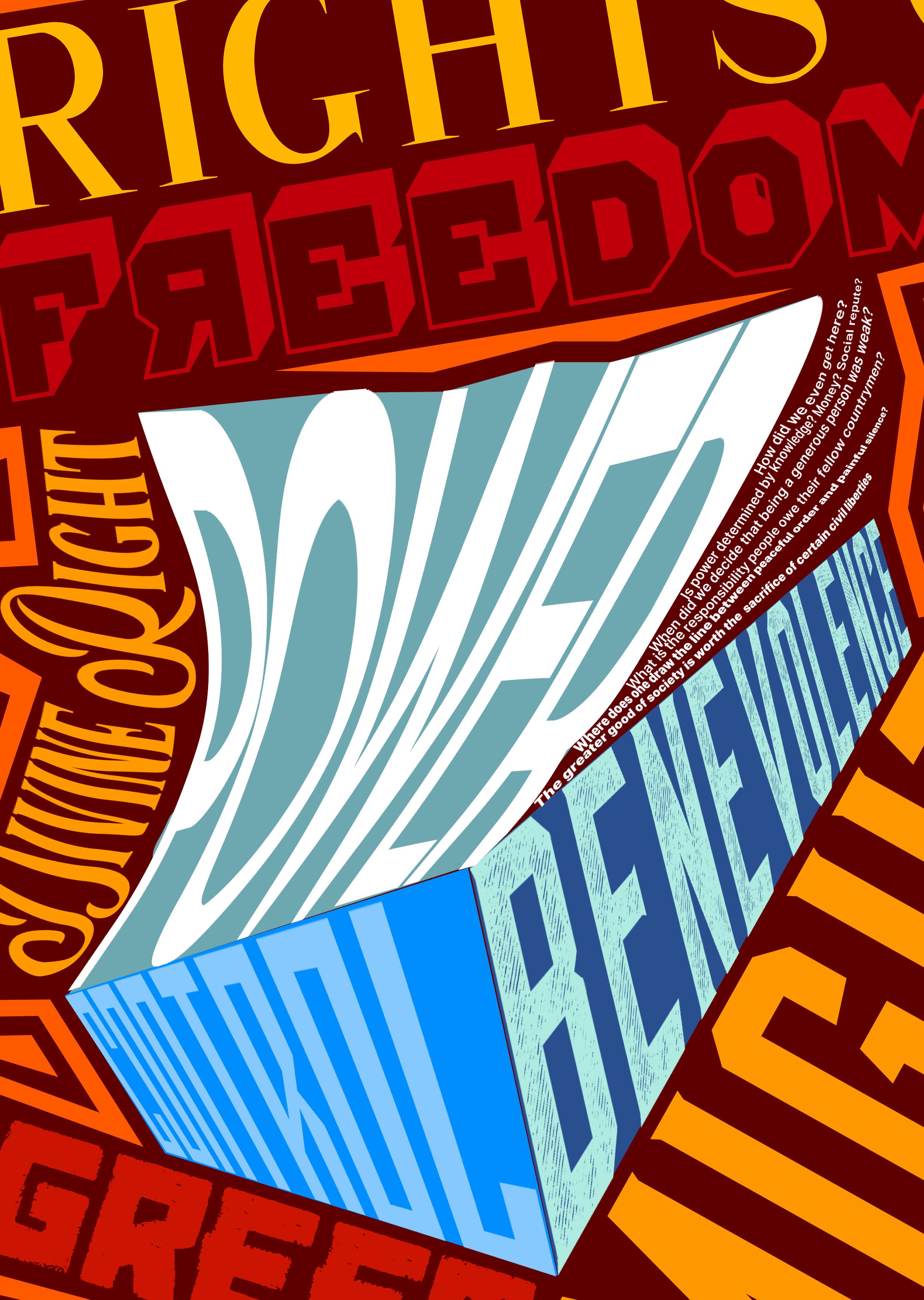
19.

20.
zthi Art by Jasmin Sm all
supremacy of markets.
I thought I was correct. Right up until I had to study the economics courses that form the final, pretentious syllable of PPE. Because there is something seriously flawed both in economics as a field and in how the ANU teaches it.
I do not know how the College of Business and Economics likes to brand the economic ideology of its professors, but I struggle to find how it differs from neoliberalism. I distinctly remember learning in my first Microeconomics class that humans are rational individuals, who always reason through their choices and who always choose the option that maximises their utility. From here, we steadily built up models to show us how markets work most of the time, and when they didn’t, we learnt why government intervention was risky.

Then we studied Macroeconomics. Because my lecturer made reference to Thomas Piketty – a French economist whose writing explores a third economic model between socialism and capitalism – I thought this would be better. Yet, we still fell into similar pitfalls. Climate change was an externality which taxes would internalise, not a reflection of the fundamental problem of an economy that must grow to survive on a planet that cannot ever accommodate it. I lost all hope when we learnt why some countries have different levels of economic growth. The explanation did not stop, nor begin with “Because some (Europe) enslaved and colonised the others” and was instead chalked up to different levels of capital. A neat way of hiding the centuries of plundering, violence and literal exploitation required to build a Eurocentric economy. I asked the lecturer about this once; he said that we had to draw the historical line somewhere. Convenient place.
None of this is new. I have not re-invented the wheel. But when life meets the expectations that everyone and everything set for you, it can still be annoying and disappointing. And I think that while we study at the ANU, it is still worth talking specifically about what we learn. To beat the dead horse, economics matters. Almost every political crisis we face has an economic dimension. From the victories of the far-right to tensions with China or to the ongoing oppression of First Nations Australians, none of these problems can be solved without engaging with the economy.
But the teachings of the CBE will draw the line, arguing that, at some point, economics stops even though capitalism insists the world keep on turning. Real economics, that puts the person, not their utility, first, can interweave ethics, history, environmental science and politics. It helps us better understand the world we live in, and to solve our distribution and production issues. I am going to go ballistic if I see another supply and demand diagram.
The major problem I see – as a completely unqualified undergraduate – is the inability of the CBE to teach heterodox economics. Heterodox teaching, broadly, means to teach multiple theories and perspectives, not just conforming to one. Eleanor Ostrom is a Nobel laureate economist who pioneered key ideas in the school of institutional economics, arguing that solving collective action problems requires context-dependent solutions, not the blankets of neoliberalism or socialist thought. I learnt about her in a politics class, then again in an environmental studies class. Never did I hear her name in economics. Piketty – the Frenchman mentioned above– has created a statistical hellscape to show that the only other time the world has had so much wealth inequality was on the eve of World War 1. Daniel Kahneman has demonstrated empirically that humans are irrational creatures who cannot compute their own utility, or even straightforward questions of probability. I learnt about him in a politics class as well. The CBE teaches one single vein of economic thought: the simplest.
This neoliberal vein has become a force for the rich and the powerful, an incredible means to stop any true reform of the economy. It does this by creating a theory and a model of the world that renders socio-economic issues inexplicable. The debates had in an economics classroom are locked in the context of the 1980s. Inflation is chalked up to demand in the economy – even though research shows this isn’t true in the modern economy – and that demand is blamed on consumers, even as report after report finds that company profits are driving current inflation. Each new issue, no matter how much it shows that profits are antithetical to human and ecological interests, gets tacked on as another externality. Until you have some lumbering, Frankenstein-like model of the world in which the supposed good of the market is hidden beneath each example of market failure that just somehow happens to nearly all markets.
There are countless other problems with modern economics and the CBE, but heterodoxy is the starting point. It would include embracing the historical nature of economics, allowing students to see how the modern world is built off racism and colonialism. It can also help pull economics away from its physics envy, to talk more about the economy as a system and to talk about the system that underpins the economy: the environment. It’s not a silver bullet, but by god it’s somewhere to start.
It may feel mean and short-sighted to single out the CBE and it probably is. Most Western economics departments have fallen into the same trap, and some have it far worse than the ANU. But I would like to tell my dad that I’m not a Tory, so can we not just talk about something new for once? I would encourage the CBE to think about the ground-breaking researchers they quote, the Pikettys and the Raworths. Understand that you can start teaching students those concepts now. That students need to learn older concepts before they learn new ones is a convenient lie for instilling the old ones and painting the new as novel and unproven.
Yet, at the end of the day, the CBE, like all colleges, must produce graduates ready to enter the workforce. After all, what EY partner wants a grad who actually thinks?
For the other PPE students out there, I can only recommend ENVS2007 - Economics for the Environment by Rebecca Pearse. Our current exalted convenor will let it count as economics. It really is a breath of fresh air, before we run out of that too.
22.
Leading SAlt Member Says Campaign Complaints "Overblown"
Luca Ittimani
Socialist Alternative (SAlt) member Wren Somerville has defended the faction’s reputation for belligerent campaigning as essential to the work of anti-capitalist activism.

In an interview with Woroni, Somerville claimed that criticism of SAlt for its style of campaigning is disingenuous and is fundamentally due to “political disagreement”.
“Some people are put off by our politics and don’t like us and are not for socialists organising in an open, active way,” he said. “What it comes down to is actually an argument against socialists.”
Somerville, who has been with the political faction for five years, claims the method is essential to finding sympathetic students and prospective members.
“If someone’s like, ‘I want to find the socialists on campus,’ they know where to look,” he said. “It would be, I think, a horrible thing if people … didn’t find socialist politics because people felt too worried about, like, doing leafleting on the street [and] trying to stop and talk.”
But the club regularly comes under fire at ANU and across the country for its campaign style. Education officer for Australia’s National Union of Students (NUS), Xavier Dupé, last year fended off questions from NUS officers over accusations that SAlt members have disrupted autonomous spaces and leafleted students while waiting in line for food.
Additionally, despite the historically left-wing nature of students, SAlt tends to be a smaller faction across most university campuses, although they have grown in size over the last few years.
In March’s ANUSA student representative council meeting (SRC 2), right-wing general representative Anton Vassallo suggested that SAlt members had harassed ANU students in their campaigning, which SAlt members strongly denied, saying the accusation was disrespectful to victims of harassment.
23.
Art by Jasmin Small
“If any one of our members was harassing people, we would obviously take it very seriously,” Somerville said. Other students have previously criticised SAlt as being a cult-like organisation. In a now famous essay, University of Sydney Grassroots member and former USYD SRC President Liam Donohoe accused SAlt of recruiting him with cult-like strategies.
The organisation dismisses the idea that its style of activism is viewed as invasive by the student body.
“Most people who come across us on Uni Avenue don’t find us super belligerent,” Somerville attests.
He attributed SAlt’s aggressive reputation to exaggerated accounts of negative interactions posted by irritated students on social media pages like Schmidtposting and ANU Confessions, saying that “stuff kind of gets overblown in online spaces”.

Somerville encouraged those uninterested in engaging with SAlt’s politics to end the conversation. “We’re not mind-readers [but] if people do give very clear indication that they’re not interested, like they say, “no thanks” or if they leave, then that’s that,” he said.
“We’re not trying to waste our time.”
SAlt is politically centred on revolutionary socialism and the theories of Karl Marx, with a focus on preparing and furthering revolutions when they arise.
“We don’t think that our group will, like, start the revolution,” says Somerville. “The condition of capitalism is what creates revolutions…but the thing that we think is important is having a group of people who are organised around the politics of those revolutions going as far as possible.”
But with protests on decline in Australia and no revolution in sight, SAlt focuses on finding and preparing the activists who will push for change when the moment arises.
Somerville says the organisation aims to “reach those people who feel like, ‘something’s wrong with the system, I need to do something about it right now,’ and … convince them that our political orientation is the one that they should be involved with”.
SAlt’s prioritisation of protest extends to its presence in ANUSA’s SRC, where it is sceptical of efforts to expand service delivery and instead pushes the student union to support activist causes.
SAlt-affiliated representatives at SRC 2 claimed education officer Beatrice Tucker was providing insufficient support for the NUS-pioneered National Day of Action climate protest, which Tucker denied.
24.
Art by Jasmin Small
Somerville has called for ANUSA to leave service delivery to the university and put all its funding towards activism.
“I don’t think that the role of a student union should be service provision,” he said. “I think the majority of [funding] should go to campaigning and activism and fighting for students’ rights.”
He insists the union’s provision of benefits such as food, grants and subsidies “lets management off the hook”.
“It would be an embarrassment for the National University if students were all starving or dropping out because they couldn’t afford food and had to work,” Somerville said. “We should fight for university management to put some of their massive surplus into providing services for students”.
This analysis of campus service provision resembles Marxist theorist Rosa Luxemburg’s view of early 20th-century capitalist economies. Luxemburg claimed that government provision of services and income support to workers masked their exploitation by their employers and discouraged them from revolting. She believed that, without government provision, workers would be forced to work excessive hours to survive amid worsening living conditions.
Luxemburg further called for governments to stop providing support for workers, believing that worsening conditions would drive workers to protest against the elites and establish a new world of prosperity. SAlt claim they do not advocate for ANUSA to stop providing services, and instead merely advocate against student-funded bodies, such as the union, being responsible for providing this support, however they routinely criticise ANUSA in meetings for providing such services.
Most SRC members are committed to providing services for ANU students, so SAlt’s ANU revolution appears to be deferred indefinitely, awaiting popular support.
But the organisation’s radical politics, which Somerville acknowledges attracts only a “small minority” of students, and its enduring image problems suggest that the necessary support base is unlikely to be forthcoming.
As a campus-politics-obsessed 21stcentury Marx would say, the dehumanising conditions of corporatised education will inevitably produce mass student protests. If this arises, SAlt will have to ask itself whether pushing protest “as far as possible” will deliver the utopian outcomes it desires, or whether its vanguard position will alienate the bourgeois undergrads who just want a night cafe.

25.
Art by Jasmin Small
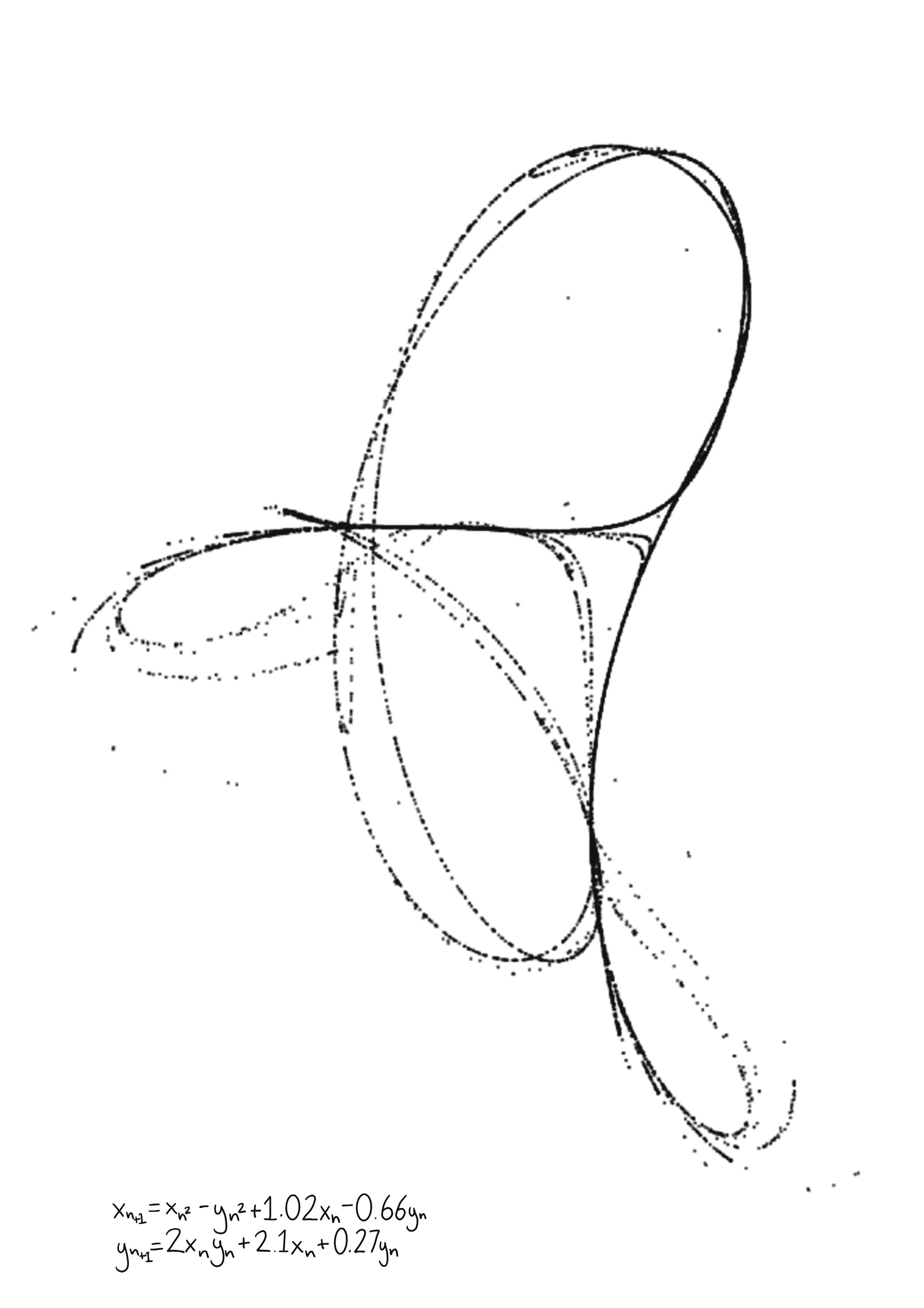
26. Art by
Jasmin Small
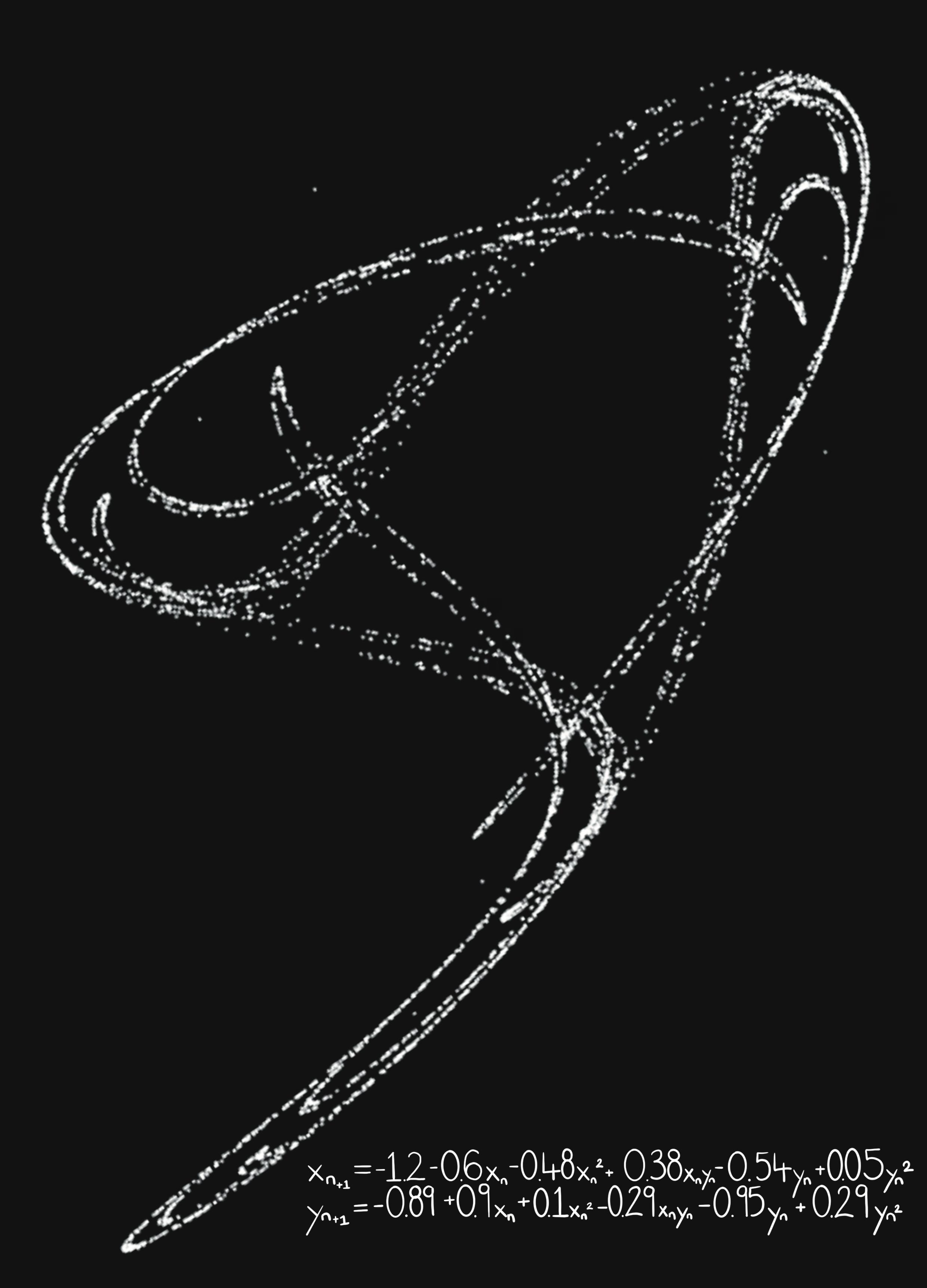
27.
Art by George Hogg
by Hassan Alanzi
British Strikes and the Return of the Working Class
Nick Reich and Chris Morris
The United Kingdom’s recent strike wave is a shining example of workers’ continued power and strength in advanced capitalist countries. Working-class living standards, confidence, and combativity have been pushed back by neoliberal governments and aggressive employers. Union membership and days on strike have declined so steeply that a generation of workers has no experience of strikes. The British strikes are pushing back those trends and encouraging re-engagement with theories of workers’ self-emancipation such as Marxism.
The return of the working class

The modest uptick in strikes since 2020 gained momentum in June last year when the massive National Union of Rail Maritime and Transport Workers (RMT) initiated rolling strikes over a pay dispute. Rising energy prices, food prices and employer attacks on working conditions in key workplaces fanned the flame, driving the spread of mass strikes across other industries. Tens of thousands of workers in areas including telecom, postal, oil, healthcare and law have gone on strike.
Since then, strike action has ebbed and flowed, notably dipping during a moratorium following the death of Queen Elizabeth. But the crucial nursing sector has continued to drive strike action this year, with February’s nurse strikes the largest in the history of the British National Health Service. Rolling strikes from some unions continue at the time of writing.
Why does this matter?
Disputes and events like this enhance the organisation and the confidence of the working class to use the strike tactic. Public support for organised labour action has been stubbornly high despite the disruption caused by these disputes. Historically, strike waves have dramatically increased union membership and participation.
The current wave follows recent increases in union membership in Britain, signalling workers’ greater willingness to organise and stop production to extract better pay and conditions from their bosses and the government. Production is
central to capitalist society, so workers’ power is immense. When they win battles in their workplaces over issues of basic economic survival, this can pave the way for workers’ power to be used in fights over broader social justice issues or other political questions. Polish Marxist Rosa Luxemburg’s pamphlet “The Mass Strike” highlights how strikes over economic concerns can transform into political strikes and shape their participants into more politically conscious people.
The British conservative government is aware of this potential and fears it. They are pushing for authoritarian laws that would prevent strike activity and limit its legal organisation, while making it easier for employers to replace workers during strikes. They have also cynically and maliciously introduced the so-called Rwanda solution, modelled on Australia’s offshore torture of refugees, in a move that has driven racist scapegoating of
28. Art
When workplace-specific issues spark public class conflict, politicians and state bureaucrats defend the interests of bosses by whatever means necessary. Governments in liberal-democratic countries like the UK will go as far as winding back democratic freedoms and scapegoating the most vulnerable in society to crush protest. British workers have rightly rejected these divisive politics by blockading attempted deportations of refugees and migrants, and holding mass anti-racist demonstrations across the country.
If it can happen there…
The scale of the economic crisis in Britain is immense. Inflation has remained stubbornly around 10% for months, with energy prices particularly high due to sanctions responding to the Russian invasion of Ukraine. The country last year experienced a rise in excess deaths, to 20% above the five-year average, after its health system was driven to the brink by long-term underfunding and the COVID-19 pandemic. Survey analysis over December 2022 and January 2023 found that almost 90% of food banks were facing increased demand. But these crises have precipitated resistance from workers, not just submission.
Anxiety over economic pressures is higher in the UK than in Australia, but Australia is not immune from the cost of living crisis impacting workers worldwide. Australian workers have suffered a massive drop in real wages over the past few years, which will only fall further in the short term. Under these conditions, workers’ resistance will almost certainly be resurgent in this country, similar to what we’ve seen in the UK, which would be an immensely positive development.
It is not an act of faith to defend the politics of class struggle and workers’ self-emancipation in a period where strikes and union membership are at an ebb. It’s a recognition that workers’ resistance hasn’t been fully defeated by the neoliberal offensive. Nor are workers invariably narrow-minded, apathetic, prejudiced or selfish. The British strikes show that the working class can still be a powerful political actor in advanced Western economies. They show that workers defending their living conditions isn’t just an economic question but a political action. The British strikes show that workers can fight and win.

29. Art
by Jasmin Small

30.

31.
Art by Fuz Buckley
Power, Unions and Networks of Care: an Interview with Student Ben Wyatt
Interview by Elizabeth Fewster
Ben Wyatt is undertaking the Master of Philosophy at the ANU. His research looks at union organising in the modern economy.
Ben and I spent a challenging year together doing our Honours theses at the University of Melbourne, amidst never ending lockdowns. We got to know each other and our research interests over long hours in the library, zoom writing sessions, and (when permitted) many stress induced pub sessions. I sat down with Ben to chat about the research he’s kicking off soon.


Hey Ben, thanks for sitting down to chat. Can you tell me a little about the research you’re doing?
Well, I haven’t done it yet, so I’m not sure where it’s gonna go. But the idea is that, historically, the economy has functioned because material things were understood to have value, and because of that, workers were able to say either “ we create this thing” or “we helped created this value”. Either way, their refusal to work was an effective way of leveraging that power. So in that context, unions became one form of labour organising that was relatively effective, and it helped working people to get political rights.
32.
Photos by Hima Panaganti
The economy is very different now and things don’t seem to have value in the same way. Now value is more symbolic and it’s more driven by speculative systems than material goods. So the question is, what is the value of labour in this new context? But also there’s a political question, about what it means for people who labour to gain political power, through their labour, in this new economy.
What do you think has changed from the inception of unions to now, that makes you sceptical that workers’ power isn’t seen the same way? What do you think has changed?
You can see it in a lot of different facets, but fundamentally things have become more abstract. For example, in Melbourne when there’s a protest, you either meet at the State Library, and protest there, or you walk to somewhere else, so there are certain avenues where you protest, they disrupt traffic to some degree, but the ritual of protest is domesticated.
For the people protesting, it’s a statement, right? They get to externalise that they’re doing something, but it’s not an exercise of power, because the powers that be - the government, corporations, whatever - they’re allowing it. Whereas the significance of a strike historically is the workers are showing through their actions that “you may own this factory, but we’re the ones creating its value, so we are going to get what we want”. I think that, especially for young people today, for all of our engagement with politics, things are very symbolic. We’ve sort of lost that way of thinking about how to exercise ourselves politically. So young people, we’re concerned about climate change, but what do we, as our generation, have that we can mobilise to get what we want?
So obviously there’s a judicial impact on how we can protest. What do you think about Violet Coco who was originally charged with eight months in jail for protesting and holding up the Harbour Bridge for 20 minutes?
Personally, I think it’s important that we strike, but for me, it’s more about civil disobedience and how you gain power. Constitutionalism is important, it’s important that there are rules to society. But I support civil disobedience, for example, the Harbour Bridge person, I support their right to protest and I think what they did is good. But the issue is that it’s still symbolic, right? Even if they’re actually being disruptive, and even if they get a heavy court case thrown at them, at the end of the day, whether they are arrested or they go home, it’s over, it’s an event, it’s a spectacle that comes to an end. It’s not forcing change in the same way.
This is the thing about the broader economy: seventy years ago if a factory shut down, the supply chain would be disrupted and the people that owned factories would be upset because their profits would be hampered. But today that profit isn’t driven by production, so, for example, even if workers shut down the factory to a standstill for a year, profit was driven by speculation on the company that owns the factory, not the goods that get produced.
What do you mean by speculation?
So speculation has a lot to do with credit and debt. Mortgages are a great example of this, we expect that properties will always gain in value. So you take a mortgage out on a property, pay down the mortgage on the expectation that the asset will be worth more when you sell it. People don’t just buy houses to live in anymore, they also buy them as investments. So homeowners support policies which continually push up house prices. New homeowners might be able to still buy a house, because even if their mortgage is expensive, they expect the house will be worth more in the future. So now they also have to support the same policies. All the while, their house was overpriced to begin with, and the longer this carries on, the greater the catastrophe for most homeowners if and when the bubble pops.
So speculation is both the idea that these sorts of assets will keep growing in value, and that that growth is normal. Beyond this pushing more people into insecure housing, it also changes the meaning of housing in society. Housing is a material need, but that need comes up against this financial structure that frames housing not as a need, but as an avenue for profit. Your right to shelter is pitted against my right to profit. But because speculation says profit is guaranteed, and a lot of people have bet a lot of money on it being so, your rights are now a privilege. But more importantly, we’re seeing a massive widening of inequality in society between those who have inherited property and those who haven’t.
33.
But in the broader economy, what speculation means is that investors aren’t saying “you’re creating a useful product, let me invest” or “you’re producing more efficiently, let me invest”. Instead, investment in society and the economy is flattened into short term returns and gambling on stock prices.
You said you support civil disobedience, that you would like to see the ability for people to practise civil disobedience more widely. What does that mean for far-right groups protesting such as those we just saw in Melbourne?
There’s two types of fascists. There are the leaders, and then there are members. In almost every situation, leaders of fascist movement, whether they admit it or not, just want power, and they will do whatever they want to get power, and they’ll use the state and the state structures that already exist - and those that don’t - to get power. They should be criminalised. The issue with the members of fascist movements is that they’re there for a reason. If you look at Germany in the 30s, or America and Australia today, it really is driven by economic anxiety, and the problem is that that isn’t taken seriously.
I’m Jewish. My grandfather moved around the world to fight the Nazis. My friends and I have protested them constantly. History shows that the only way to stop Fascists is with physical opposition. Whether it’s the 43 Group or today’s American antifascists, you can only stop Fascist leaders by stopping any attempt to normalise their presence. So punching Nazis is good precisely because it forces a conversation about violence, a conversation they don’t want to have while claiming they bring security and calmness to people’s lives.
But punching Fascists isn’t enough. You have to find the root cause. If you’re a white working class man, who every day is being fucked over by the economy, and for 50 years or 100 years, you’ve been told “don’t talk about class, talk about gender and race”, or “it’s not your employer , it’s migrants and women taking your job”, that’s the issue. That’s the cause of fascism. The cause of fascism is that there are genuine issues in society and people are given the wrong solutions. Find a scapegoat to protect the status quo, but feel like change is coming. It comes back to structures of power.
So anti-fascism doesn’t begin and end with punching a fascist in the street. It’s about community building and networks of care. It’s a much broader thing about rebuilding a frayed society instead of waiting for the next Fascist march and asking “what should be done?”
What would that look like in practice, community building and networks of care?
Ideally what you need is communities that are marginalised, not just being visible, but developing a public. Politicians and advertisers often talk about or to a public. A sort-of imagined normative community who represents Australia. They are spoken to in the media and in politics, and they’re the people that policy is made for. Marginalised communities developing their own public really means building spaces and discourses that can sustain life, not just moments of protest.
So in my own community, we started a newspaper, we’re trying to foster debate and discussion around important things in my community, and we also run events. We’re soon going to start up mutual aid networks and things like that. There’s a million different things that can be done. But the fundamental point is beginning with the concrete questions like “what do we as a collective need?”, “what structures would help alleviate this?”, “how can we facilitate ongoing dialogue instead of speaking at one another?”
Returning to this sort of grassroots structural stuff isn’t to say that protesting is less important or that things aren’t urgent. But change comes about when people display their power to act. And we can only do that if we can sustain one another. Networks of care are not ready-made models for community, they have to be about the real people in front of you and their real needs. The tediousness of the solutions are important because they unravel our affection for a broken system, and help us to work out what leverage we have to force a change for good.
34.

35.
Art by Max Mcfarlane
by Jasmin Small
sometimes i see a smaller me waving under the filmy surface of the bathwater there are suds clouding her eyes but i recognise her small, sinewed hands grasping out to reach mine and so,
i submerge myself, and i return to her grasp
her glitter speckled nails score deep marks into my skin
i smile.
i guess we still are alike.
the smooth crescent shaped imprints remind me that i am simply half-baked clay
i plead for the sharp pain to mould me
i plead for it to make a new fetus out of my collision of mud but pain slips between the quivering of my own fingers
why does it flee from me?
i put out my hands in front of her again i convince myself i am offering her salvation i convince myself that her power to inflict pain is what makes us similar i convince myself that the pain she causes is life-affirming and my pain is stifling go go hold onto me grip onto my wrists claw onto me and raise yourself from the water dig your nails as hard as you can quickly.
but she doesn’t listen she never does and she never will
her small hands trace the nail marks in my skin
she peppers my hands in tiny kisses she seems worried that she hurt me
but the small red moons that speckled my hands disappear and the small bursts of pain succumb instantaneously to transience

she giggles
i sigh
we go through this every now and then
it’s a pulsating ache that swirls in my gut
why doesn’t she understand this will heal her?
i curl into myself
frantically wrapping my arms around my legs
scrunching up the strands of hair that float in the foamy water
i can’t cry in front of her
i can’t -
36.
Art
her fingerpaint stained palms reach out and she holds my shuddering face she giggles again and her little dimples reach up to her eyes
her fingers pinch my cheeks
she pokes at my dimples and her eyes become glimmering pearls almost as if she’s in awe that we look alike
she reaches for my arm twisting and turning it back to front as if she’s lost something
she shows me her arm and points to a large, bruised scar above her wrist
ah the scar we got from running into a dumpster the first time we rode a bike
i point to my wrist
“it healed, the scar is gone”
she beams we always hated that scar. for a second
i forget that my purpose is to save her for a second
i forget that my purpose is to take her out of this torrent
tiny bubbles tickle my neck as she whispers in my ear
“it’s just bathwater silly.”
i sigh and then i giggle the need to breathe knocks against the walls of my chest it is time to leave i cling tightly to the sides of the bath and finally, i raise myself to the surface goodbye weightless child tethered to the drain
thank you for wringing me dry.
Outer Child
Katriel Tan
Author’s Statement:
Often, we find ourselves hyper focused on this idea of ‘healing’ our inner child – we think we’ll find solace in putting a younger version of ourselves back together. This idea of our inner child being ‘broken and helpless’ is a constant meta-narrative that permeates our mindsets and I sought to write something that reflects the significant extent to which we discredit the inherent power of our inner child to already possess traits we don’t realise can provide comfort to our current selves; a pure innocence, a lighter perspective of the world and a stable understanding of self that is whole and dependable.
Our inner child doesn’t always need salvation or pity, and rather, we should remind ourselves that they are a powerful force of warmth intertwining our temporality, who we should actively seek, not to fix, but to fully embrace our current selves in the solace that they can provide.
Art by Jasmin Small
37.
-K
The Queer Experience: The Nexus Between Sex and Power Rafferty Edis
I think about sex a lot.
And a question I often come back to is: are sex and power inherently linked? Specifically, how do these dynamics play out in queer sexual experiences? Being bisexual, I can’t speak to every queer experience, considering the diversity of our community. However, I do think there are particular challenges that we collectively face due to our sexuality and/or gender identity within a heteronormative patriarchy. One area where this is salient is sex.
Growing up queer, there is limited exposure to positive queer models of having sex. Instead, we are exposed to a very narrow and rigid depiction of sex; one that is heteronormative and propagates this idea of domination and subjugation. The work of radical feminist, Andrea Dworkin, provided insights into the subordinative nature of sex. Dworkin’s theories suggest women are not having sex with men, but are instead being f****d by men. This narrative is fed to us through porn, movies and music, right down to advertisements and the language we use surrounding sex. This in itself is problematic.
Media in this space is produced for a predominately straight male demographic. But if you’re queer, you are left without a model of healthy, safe sex that is aimed at your sexual identity. Progress is being made and representation is getting better. More inclusive, sex-positive portrayals of sex in the media, such as Netflix’s Sex Education, are breaking the stigma and challenging the conventional power politics of sex. But often, the patriarchal-heteronormative model of sex is copy and pasted into queer media and queer porn. One such example is the critically acclaimed Call Me By Your Name, which centres a sexual power imbalance in the form of an age gap.
Most queer porn still propagates a power imbalance where one party is dominating their sexual partner/s. Actors are often stripped of their humanity and reduced to their bodies, vehicles for pleasure. This generates expectations in real sexual experiences; where one partner may feel entitled to sex, or a specific type of sex, one with a power imbalance and domination. I’m not referring to consensual role-play of sub/dom positions, provided boundaries are clear and respected. Instead, I’m referring to the more pernicious exertion of dominance or force over a sexual partner(s). This can be through physical force or emotional manipulation.
When domination occurs outside the clearly defined parameters of roleplay; there is an easy segue into disrespect, exploitation and abuse. This is because one party’s needs and desires are being privileged over another’s, with little regard for how the latter may be affected.
Visionary feminist bell hooks discusses how domination is conducive to and creates an acceptance of violence. She discusses how sex can be used as a cathartic release for male rage rooted in unmet promises of privilege and power made by the patriarchy. While she is talking about heterosexual dynamics, queer sexual dynamics are not immune from patriarchal influence unless all parties involved are consciously working against it.

38.
Art by Jasmin Small
Content warning: sexual violence and sexual harrassment
Growing up with the internalised belief that sex always entailed domination put me in unsafe situations I came to accept sex as having these concomitant feelings of fear and discomfort. Things came to a head when I was 17; my boundaries were violated and I was left with a damaged sense of self, high anxiety and insurmountable shame. But I still didn’t see the problem with this model of domination and by extension, male aggression, until much later. Because I thought it was normal and just came with the territory. Through more positive sexual experiences, I came to realise that there was nothing biological or innate about this. It was cultural.
Rates of sexual abuse and intimate partner violence within the queer community are appalling. These statistics are even higher for transgender people and queer people of colour. Human Rights Campaign found 44% of lesbian women and 61% of bisexual women experience intimate partner violence (IPV) and sexual assault (SA). 26% of gay men and 37% of bisexual men experience IPV and SA and 47% of transgender people are assaulted during their lifetime, with even higher incidence among people of colour. Additionally, there are barriers to reporting; which is already a stigmatised process in itself but exacerbated with the additional elements of gender (such as emasculation) and/or race (such as racial profiling). Violation can be a way of ascertaining a sense of power at the expense of someone else. Sexual assault and intimate partner violence can derail the lives of the victims and ruin their relationship with intimacy, touch, love and sex.
Another facet of this is homophobia or transphobia held by one or more sexual partners, even if it is internalised. It can be a source of shame for those who aren’t comfortable with their sexuality and seek to reassert control by exploiting the power imbalance during sex. Additionally, we are never provided with a roadmap for how to navigate these situations where a sexual partner is homophobic, transphobic or not out.
Men in the patriarchy are socialised to be homophobic, especially in adolescence. I grew up in a rural community where homophobia was rampant and I saw firsthand how boys used homophobia to divert suspicion from themselves and assert their social power by being a ‘man’s man’. It is tied up in a bigger issue of patriarchal masculinity and rejecting what is thought to be unmasculine.
It has been difficult for me to reflect and see how the homophobic behaviours of others have created internalised homophobia in me. Being surrounded by homophobia in my formative years leaves a legacy that I have to consciously deconstruct. I want to ensure I don’t carry these beliefs into future sexual experiences, where I believe that I am deserving of poor sexual treatment due to being queer.
So within my own sexual experiences, I have seen my conception of sex shaped by a) the media and b) socialisation through my peers. This fostered a patriarchal and homophobic approach to queer sex. But there are more loving ways of having sex, where it is mutual, trusting, and a power imbalance isn’t present. Irrespective of whether you’re having sex for pleasure or intimacy, we need to challenge our ideas of sex and do it on our own terms, as both we and our sexual partners want. Not as the patriarchy tells us we should.
If you or anyone you know is affected by the content of this piece, please contact one of the support services below:
1800 RESPECT
1800 737 732
24/7 – National sexual assault, domestic and family violence counselling service.
Beyond Blue
1300 22 4636
24/7 - Depression, anxiety and suicide prevention

39.
Art by Jasmin Small
Take A Chance
Cristina Munoz
There’s something ridiculously embarrassing about taking up a new hobby as an adult. Recognising that there is something you want to try is the easy part. A quiet thought in your mind saying it would be cool if you could do that.
Putting it into action is harder.
There’s an endless supply of excuses.
I’ll never be as good as someone who started when they were young…
I’ll be so bad at it, everyone will be better than me…
I don’t have enough time, I’m too busy…
But what would happen if you did try?
Well, I can only speak for myself. Let me tell you what happened this year.
I always thought in the back of my mind that it would be cool to learn a martial art. For years I never did anything about it, because of the ‘reasons’ above. But this year, I figured, why not?
I may never be as good as someone who started when they were a child. But that doesn’t matter when you’re not trying to be the best. I mean, I don’t want to make a career out of this, I don’t need to be the best, I don’t need to be better at it than other people. I just want to try it for fun. To see what it’s actually like, and to be able to do something that I’ve never been able to do before. And if I start today, I’ll already be a little bit better tomorrow. And for me, that’s reason enough to try.
And of course, the first step is usually the hardest. After the first time, everything is a little easier. I attended my first martial arts class, met the instructors, and found out how the class was run. It was definitely easier to go back for the second class. But after the first step, I had a new challenge: being bad at it. It didn’t come as a surprise. I had never done anything like a martial art before, so of course I was going to be bad at it. One day, I found myself in a strange and ridiculous situation where I could not mimic the movements of the instructors. It looked so simple and easy when they did it, and yet I spent a solid five minutes swinging my arms around in a way that I had never done before. A way that was completely wrong. The movements were just so alien to me and I couldn’t figure it out. I knew it, the instructors knew it, and anyone else in the class who saw me would know it (although they were too focused on their own movements to notice). But it was beautiful. Because I can’t think of any other situation in my life where it’s so ok to be so bad at something. I didn’t have to hide it, or feel ashamed, because everyone knew that I was a beginner. And it felt so liberating to have other people acknowledge that I was completely clueless, and that it didn’t matter.
40.
And since I was there to learn, an instructor helped me correct my arm movements, and now I can look back at how I was in the beginning, and see the progress I’ve made. Which makes me smile a little, and glow on the inside, and is reason enough for me to make time in my week for this. Even when I feel like I’m busy and don’t have enough time. Because it gives me something to look forward to, to practise, and get better at. And I think there’s something powerful about making time for this thing that I enjoy in my week. It’s a way to listen to myself and honour my wants. Acknowledge that I am a person outside of studying and work, and a way to choose myself. It’s definitely worth the time investment.
There’s something transformative and powerful about taking up a new hobby. It’s the flipside of how ridiculously embarrassing it is. But you know what? That’s all part of the fun. When else in your life can you enjoy being terrible at something, knowing that it’s ok, and you’ll get better?
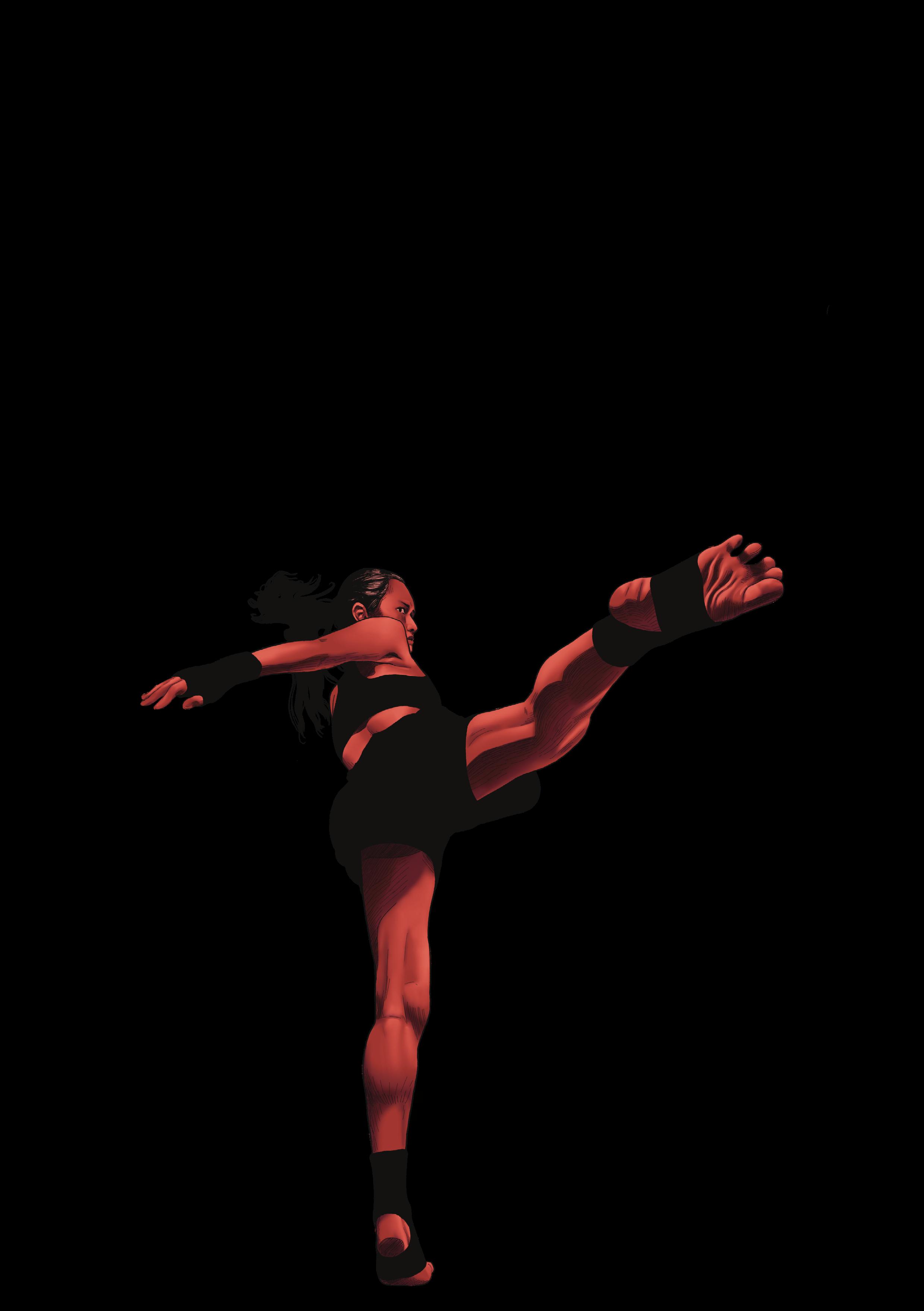
41.
Art by Jasmin Small

42.
Art by Louisa MacDonald
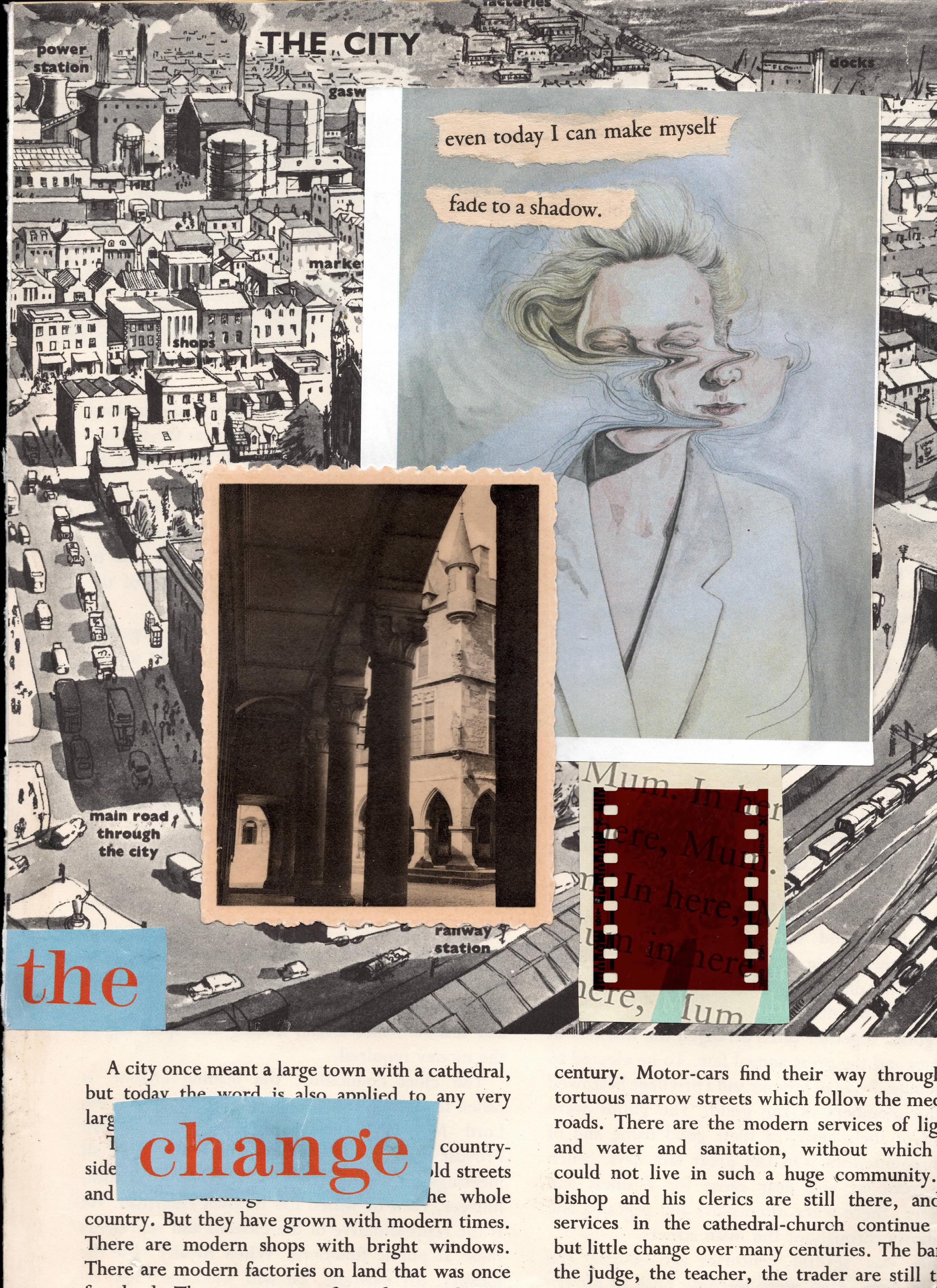
43.
Art by Jasmin Small
Perspectives From

a Non-Native Speaker in Oz Shuang Wu
Understanding accents
Growing up, I watched a lot of American TV series and movies, so I became accustomed to the American accent. I even used to practice speaking with an American accent. On the other hand, I find the British accent very elegant, and I would take pride in having a local accent. However, after spending almost a year in Canberra, I realised that being able to speak authentically and accurately is more important than trying to imitate a particular accent. I now focus on using words precisely to convey my ideas and priorities effectively. Expressing myself in a more authentic way has been a challenge for me, especially when it comes to using idiomatic English. I believe that idiomatic English involves not only the words we choose, but also the intonation and pronunciation we use when speaking. To improve my ability to speak more authentically, I have been focusing on learning more common English expressions and practicing my pronunciation and intonation. By doing so, I hope to better convey my ideas and communicate more effectively with others.
Despite this, I have encountered some challenges with accents. When speaking with local elderly people, I sometimes have difficulty understanding their very distinct accents. When speaking with two locals who have strong accents, it can be challenging for me to keep up with the conversation. Not only do I need to concentrate on understanding what they’re saying, but I also need to think carefully about how to respond to them. With the back-and-forth nature of their conversation, it can be overwhelming for me to keep track of all the details while trying to formulate my thoughts. It’s a bit like trying to keep up with a fast-moving train of thought. Despite these challenges, I try my best to stay engaged in the conversation and ask for clarification when necessary. Through my experiences, I’ve learned that it’s important not to be shy about asking others for clarification.
44.
English as a universal language
As a non-native speaker, English can be challenging for me and takes me out of my comfort zone. I’ve noticed that there’s a difference between the English I learned for IELTS and real English communication. To practice English more effectively, I have been trying to participate more actively in various groups and create opportunities for communication through social activities. This has not been easy for me, as I’m not naturally outgoing, but my desire to learn English and better understand the culture has motivated me to become more communicative and engaged with people. Although my English skills may not be perfect, I strongly believe that it is the universal language that can help me bridge language and cultural barriers when communicating with others. Whenever I speak with someone in English, I feel empowered to connect with them in a way that transcends our linguistic and cultural differences. Fear can often stem from the unknown, particularly when it comes to religion. It can be difficult to get an objective assessment from the media, which can make the fear feel even more daunting. However, as I’ve engaged in conversations with people of different faiths in English, I’ve had the opportunity to learn more about their beliefs and customs. Through my interactions with individuals who practice Hinduism, Islam, and Catholicism, I’ve discovered that they are friendly and open to sharing their religious practices with me. This has helped me gain a better understanding of religion from a different perspective.

45.
Art by Jasmin Small
Art by Amanda Lim
Beauty in the Eye of the Goldfinch Is Beauty a Force of Power?
Angie Ritchie
Content Warning: This piece contains mentions of drug use, specifically oxytocin and morphine, as well as mentions of murder.
“You can look at a picture for a week and never think of it again. You can also look at a picture for a second and think of it all your life.” – Donna Tartt, The Goldfinch.
Since I finished The Secret History a few years ago, I have been seriously fascinated by Donna Tartt. Tartt never fails to deliver characters who are intoxicated with beauty. Some of her characters are so intoxicated with beauty that they let it lead their lives. In The Secret History, the protagonist has such a desire for the picturesque, he overlooks murder by his friends because they appear classy and sophisticated. Beauty becomes what is most valuable to him, to the point where it justifies any immorality.
In my most recent read of Tartt’s work, The Goldfinch, the protagonist (Theo) is so obsessed with the significance of an artwork he stole, he lives in a state of paranoia which results in taking oxytocin and morphine. The piece’s message is that art and, more broadly, aesthetics can be a uniting force for humanity, but they can also cause us great strife.
As a manifestation of beauty, art is one of the very few things that has existed for much of human history. Despite the brutal conflicts, inequality and injustice that have existed for centuries, art has always persisted. And art has always been powerful. It tells stories. It connects us with the experiences of those who came before, whether that is through religion, culture, philosophy or lifestyle. It connects Heaven to Earth (*cue The Creation of Adam*).
I have always found the power of beauty a particularly interesting phenomenon. As social media becomes a key part of society, I cannot help but feel that images, aesthetics and presentation matter increasingly. That is both empowering and terrifying: empowering because beauty can connect us and terrifying because an emphasis on bodily beauty can harm our self-worth. Despite this, an appreciation of beauty, and its manifestation through art, could equip us with the tools we need to thrive in the modern world. Could beauty be a force of power? Or do we emphasise it too much— to the point where it’s destructive?
One of my most poignant memories is an excursion to the local national park in primary school. My class trudged through bush tracks to arrive at our first stop.
It was a rock.
But it was beautiful.
We had the privilege of having a First Nations man share some of the most ancient surviving art with us. Carved into the rock we surrounded was an outline of a kangaroo. Our guide had told

46.
told us that it had been there for thousands of years, used to communicate that kangaroos were in the area and to pay tribute to Indigenous peoples’ totems, an integral part of the Dreaming. Even as a young child, I had a sense that the mere existence of this carving was special because it was understood and observed by generations and generations of people. Every time I stumble around a gallery, I find myself awestruck by the scenes, memories and histories artists can capture. Art enables us to connect to our ancestors and enemies. It symbolises and provides a perspective on complex questions without definitive answers. It is undeniably a force of power.
Whilst images can be powerful, they also have the potential to disempower. The modern world emphasises beauty to an extent that may be damaging. Artistic interpretation recognises worldly and spiritual beauty, which empowers humanity. Yet, today’s society is more concerned with individual human beauty.
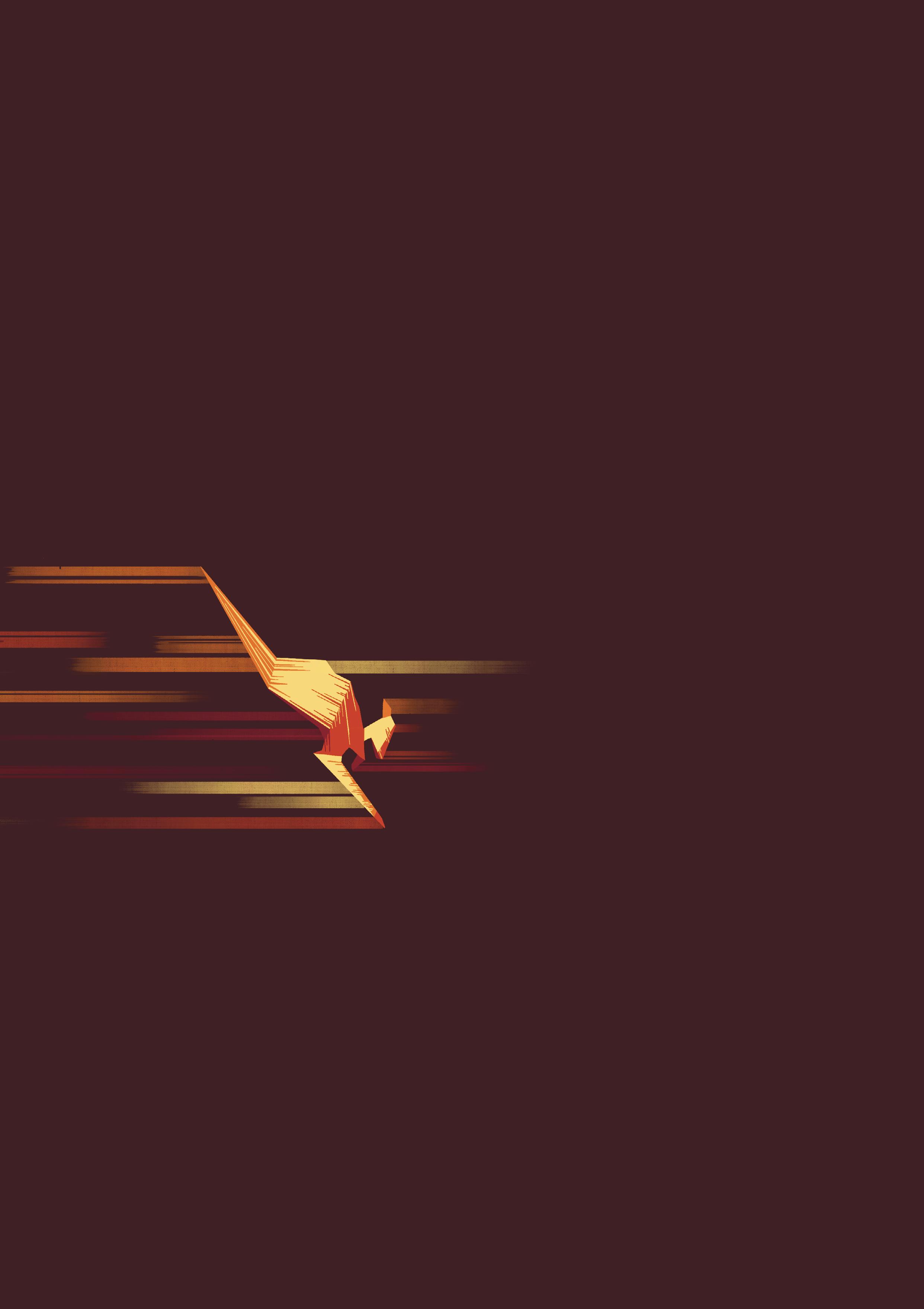
A focus on merely the human form and its physical attributes has the potential to reduce an individual’s self-worth. Rather than being connected through our shared human experience, we may focus on division based on mere physical features. With most of society using social media and adhering to its exhaustive expectations of beauty, I cannot help but feel we are forgetting that beauty is not merely defined by material things. Whereas the beauty in art is defined by the way in which it conveys meaning, emphasising other’s beauty, in the form of their body, inherently creates self-comparison. Such self-comparison can cause internal frustrations and feelings of inadequacy.
Whilst beauty standards definitely existed before the age of social media, it seems they were not revered to the extent they are today. In some cultures, particular physical features were seen as blessings or symbols of luck. But individuals’ worth seems to have been defined by much more than these physical features, which served more as an added ‘bonus’. Maybe we should take a page out of the book of our ancestors - we should have the autonomy to recognise physical beauty and admire it but steer clear from a reverence of it.
Ultimately, it feels as if society has become so intoxicated with physical beauty that they have forgotten the entire purpose of art and aesthetics; to connect us. Like Theo we seem to have made the pursuit of beauty a main purpose of our lives. However, unlike Theo, our pursuit of beauty has become superficial, seeking temporary validation from our peers.
Looking forward, beauty may continue to be a weapon if we continue to emphasise it through the lens of social media. But equally, it can be a tool to empower us. To combat the overemphasis on the corporeal today, perhaps we need to return to the purpose that beauty once served. As in the earliest forms of art, beauty could be to educate, communicate, connect and reflect. We should reject a distorted, material focus on beauty and praise messages of value-based meaning on social media. As The Goldfinch asserts, “You can look at a picture for a week and never think of it again. You can also look at a picture for a second and think of it all your life”. Let the pictures we don’t think twice about be those that hyper fixate on physical beauty. And let us instead contemplate those historical and cultural revelations that bring us together as a collective.
47.
Art by Amanda Lim
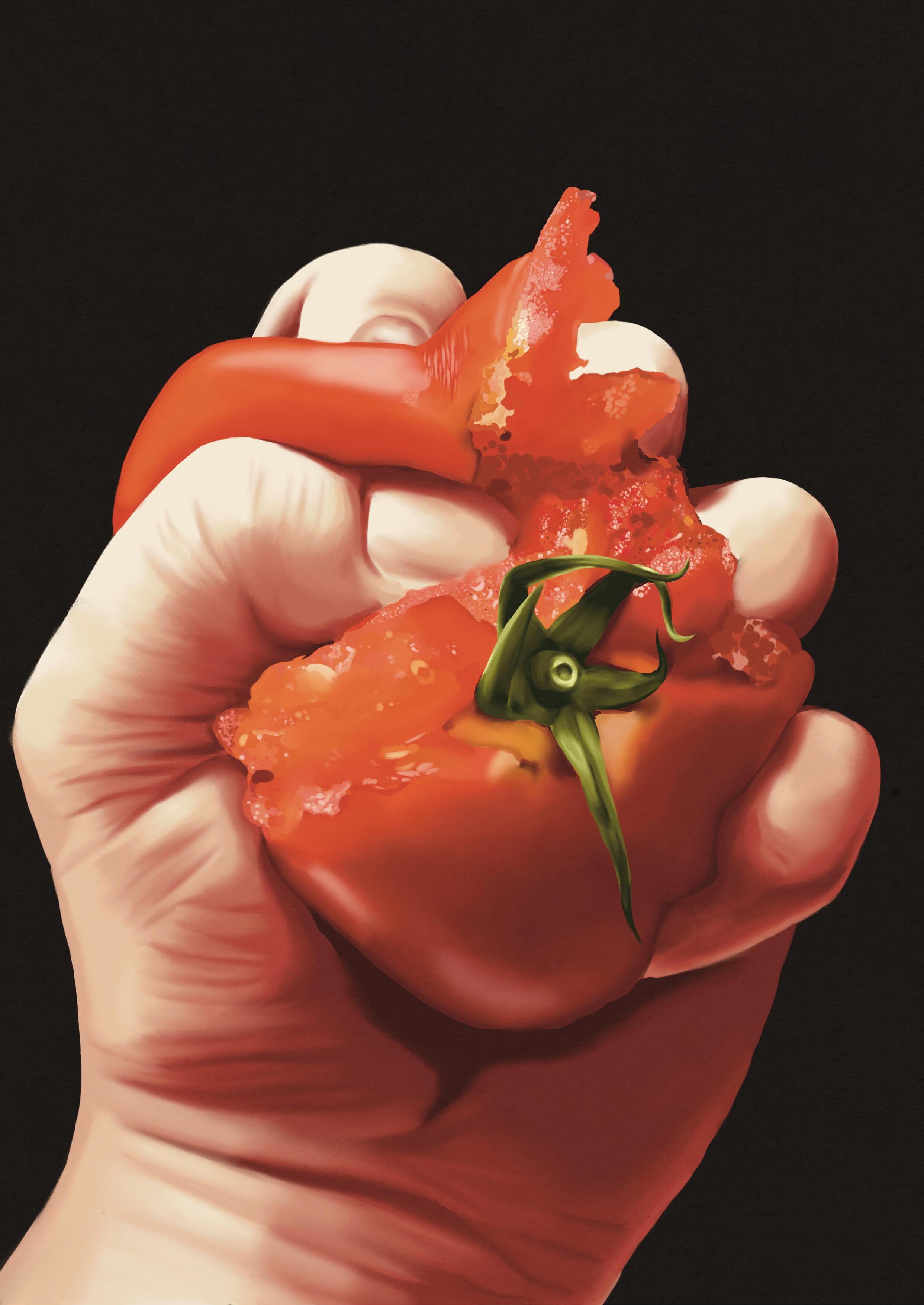
48.
Art by Jasmin Small

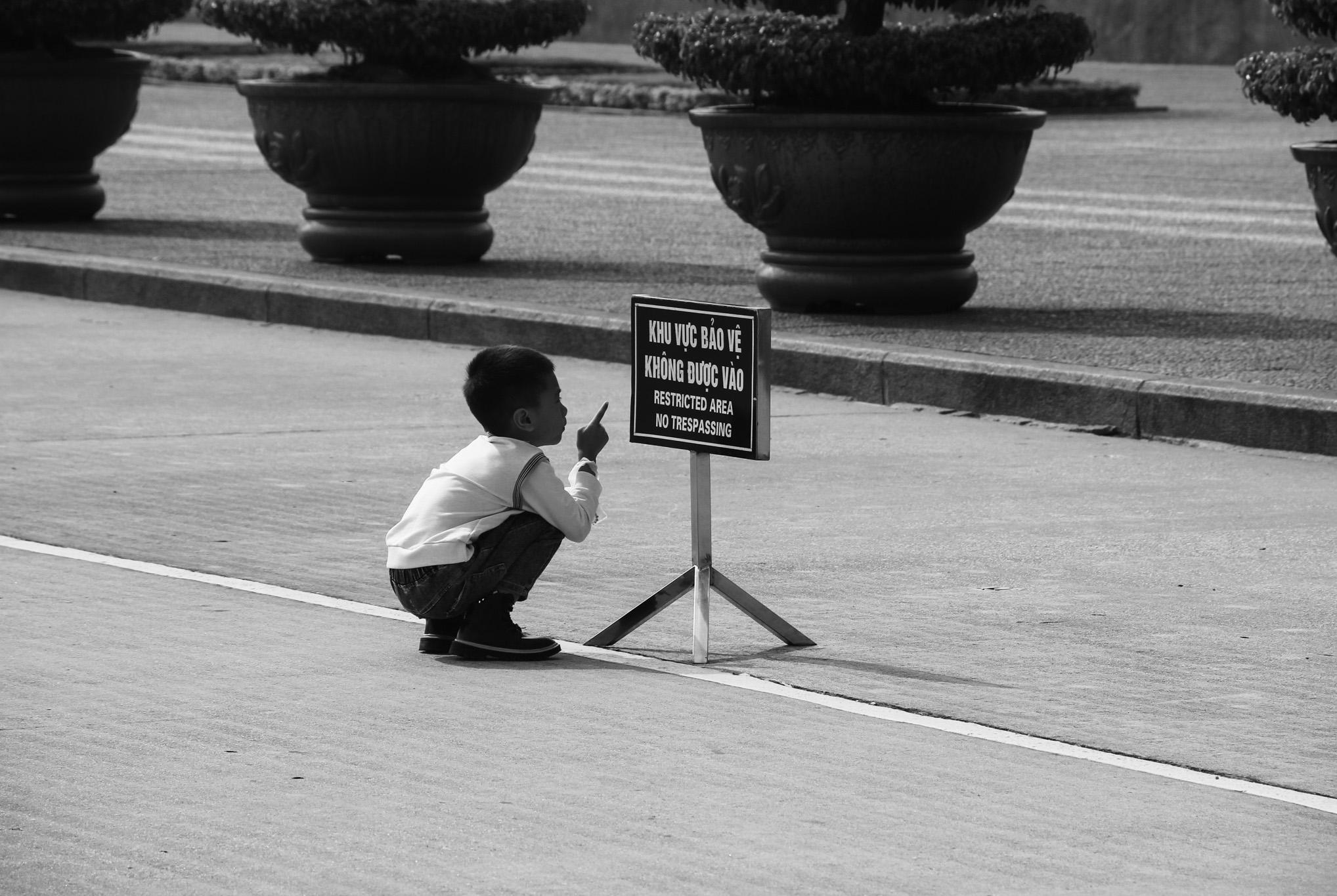
49.
Photo by Benjamin Van Der Niet
Photo by Chris Jackson
Art by Cynthia Weng
What Languages Taught Me
Rie Shioya

What do you call yourself in English other than your name? I think most of you use “I” or “me”. I always do so, of course. What about in your mother tongue? For me, I mean, in Japanese, there are tons of ways to refer to yourself, such as watashi (私), watakushi (私), boku(僕), ore (俺), shousei (小生) ... too many expressions to remember!
The choice of words depends on the context: hierarchy, gender… I usually use watashi (私) because I think my gender is female. But if it is a formal occasion, I need to say watakushi (私) to show my respect for the listeners. Male friends might struggle with using different expressions. They can use ore (俺) in casual settings but should use watashi or watakushi (both are 私) for formal occasions. Boku (僕) can be used almost anytime but is not suitable for very formal situations or contexts. Different levels of language have different nuances and cover different roles.
Nowadays, I just want to gain maximum mastery of the languages I’m learning. I want to understand completely what I say and what you say, including each word’s meaning, nuances and contexts. Still, I often struggle with speaking. During my first days in Australia in particular, every moment could make me cry, as I didn’t know the details of the words in English. Is this the right way to say this? Did I hurt you, or did you hurt me? I always asked those questions to myself as I was worried that my words might have wrong or even rude meanings. Also, I feared the uncertainty of the words told to me, as I feared jokes, or being teased at or looked down upon (now I know most of my friends never do so, so I don’t worry anymore).
One of the friends I met just after my arrival at ANU showed a great interest in Japan and is quite fluent in Japanese. This gave and still gives me a wonderful sense of belonging. Even when he told me about his journey to a place in Japan that I haven’t been to, or talked with me probably just to practice his speaking skills, I felt as if I were allowed to be who I really am. No time was better than then to realise that the words I used represented my thoughts, feelings and even who I was. In our conversations, I felt I could use my mother tongue almost exactly as I intended. I felt my thoughts were accepted as they came up, expressed in my familiar words.
Although my studies are unrelated to linguistics I decided to cherish all words. Words can make others feel safe. Like my friend who inspired me, I hope my small language learning steps will bring comfort to non-native speakers and foreigners and make them feel welcome in new places.
この文章は、私の考えの言語化と決意、そして今まで出会ってくれた友人への感謝を伝 えるためのものですが、誰かにとって言語を学ぶことの励ましになったら嬉しいです。 読んでくださりありがとうございました! (This essay helped me verbalise my thoughts and determination to learn languages and show my appreciation for my friend, but I hope it inspires you to learn languages too! Thank you so much for reading!)
50.
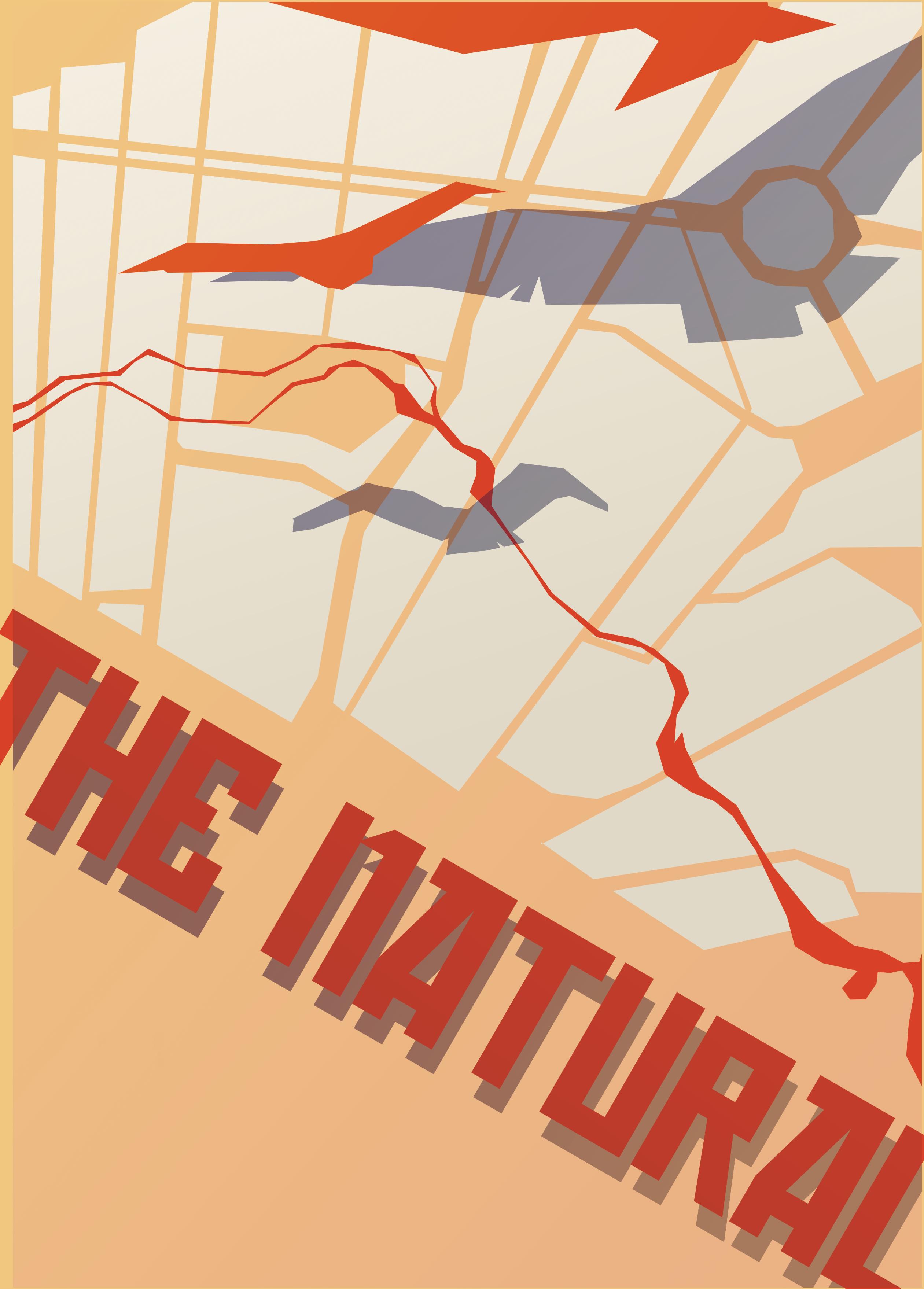
51.
Art by Max Macfarlane
Art
by Fuz Buckley
DIY Volcanoes: An Interview with Dr Ana Casas Ramos
Interview by Virginia Pl as
What’s your research about?
My research is in mostly experimental volcanology. I’m originally a chemical engineer but then I studied, during my masters, an active volcano in Mexico. When I did my PhD in Germany, I became more of an experimental volcanologist, using high temperature equipment like furnaces and putting gases and ash inside to react and see what happens during volcanic eruptions. What I’m doing [at the ANU] is taking that a bit farther and trying to do high temperature sulphur reactions, but with more complex minerals. The ash that I was working with was very glassy, and glasses react in a very rapid way compared with minerals. So minerals will have different reactions kinetically: a bit slower, a bit faster, depends on the mineral.
The more we constrain these reactions between sulphur and minerals on Earth, the better we can predict how much sulphur is going to be recycled in this cycle. And also [we can predict] climate implications, I think that’s the big goal. We need to know how much sulphur that is going to be released at some point after large eruptions, so we can put all that in a climate model.
What sort of implications could this have for the climate?
It can change the climate such that it will become cooler after a very large eruption – let’s say something like 80 million tonnes of sulphur dioxide. If it’s a very large eruption, meaning it will reach the stratosphere, the sulphur interacts with atmospheric water and forms sulfuric acid droplets. Those molecules can reflect and absorb solar radiation, which means we will get less radiation. Less heat, less light. It has happened before, it will happen again, and the more we know, the better prepared I reckon we’ll be.
So you’re studying a lot of these things without having access to a physical volcano. Actually, yes! I did that in Germany [during my PhD] and I thought it was hilarious. I’m
used to volcanoes – in Mexico you have them everywhere. And then you go to Germany and they have all these experimental setups, so you become a bit more separated from the field work. But it also shows you a lot that you could not see even being there because of a lot of these high temperature reactions, we cannot see them. I think that’s the beauty of experimental technology.
How exactly do you make your own volcano? What are the ingredients?
It’s very, very straightforward, actually. You need high temperatures. And by that I mean, we can get up to 1200 degrees. There are some that go up higher, but that’s a bit too much to set up, and also not safe if you’re working with gases. So I’d say the range between 900 and 1000 degrees is a bit of a limit. So you need a high temperature furnace and you need gases. That’s also a bit tricky because of all the safety regulations. No one likes to work with SO2 [sulphur dioxide] because it’s very corrosive. But that’s also the cool thing about this work, right? No one does it. So we come here and do it with safety measurements, of course. And then, samples: you need either mineral samples like the ones I’m using or rock samples that you can crush to make your ash or just rocks.
And then what happens after you collect all the things that go into it?
Then I try to build the setup. It’s a vertical furnace, where I insert my sample at the top. The sample is an open glass rod where I put my minerals at different heights and then I open the SO2 that comes from below and exits above. All the SO2 reacts [as it goes through]. I know the flow of the SO2 , so I know how much there is inside. And then I leave it for different times. One hour, two hours, three days. Then I take collected samples at different times so you can see the evolution of the reaction. I use different samples, different temperatures, different gas flows. Initially it is close to the volcano, would be around 700 to 2000 degrees. And as the eruption proceeds, it cools down. We have the whole range of
52.
Woroni sat down with Dr Ana Casa Ramos to talk about how she studies volcanology at the ANU despite a lack of volcanoes in the Canberra region.
temperatures. You know, we can really map the reaction.
I should also probably ask what the actual term for the artificial volcano is?
The one that I used in Munich had a more specific name. It was called the Advanced Gas Ash Reactor (AGAR). I’m trying to build that here. I submitted an application last year to build a bigger volcano, because the one that I’m using now is sort of just a furnace. So I’m having all these ideas from Munich, and I hope I can build my own, which will be more volcano-like.

What would be different about an AGAR compared to what you have now?
Mostly it’s the rotation part. [The current one I’m using] has a stationary set up. So the sample sits there, it passes through, then we have the heat – but that’s it. What I think is important for reactions, and to simulate volcanic eruptions, is a lot of motion. If you see a volcanic eruption, the gases and ash move very dynamically. The more movement you have, the more collisions you have between molecules and ash, the more reactions occur. But again, I hope I can get the funding to do that.
Are there any internal processes in a volcano that you can’t measure with a machine like this?
I think that if we could find a way to measure, for instance, the surface of the ash during those reactions, maybe with some sort of camera device inside, that would also give us a better idea of how particles behave. What happens with sulphur and ash is that gas molecules and ash collide. Sulphur gets absorbed onto the ash and forms calcium sulphate, which is a salt like sodium chlorine. It forms on the ash surface and that also helps ash particles to stick to each other, to aggregate, which also changes the dynamics of ash.
Is that how you end up with ash clouds?
It’s something like that. If you have a lot of these collisions, a lot of these salts, it will change how much ash can travel because the ash particles become these aggregates, which will make them heavier and they fall faster. A lot of these large eruptions also disrupt air travel. So if we know more about this source of ash mobility that could be of advantage. In situ measurements of these reactions would be great. I don’t think we’re quite there yet, but we’re always looking for collaborations. If there is some money around from engineering or things like that which could contribute to this project we would be very happy.
I’ll make sure to publish that. Honestly, we need help.
How does the scope of what you can study somewhere without active volcanoes compare to what you can study somewhere with them?
I think it complements very well. What I’ve found is that it’s great to have both. With hands-on fieldwork, with real samples and real volcanoes, you only see what’s coming out. You only see the outcome. Whereas when you do experimental technology, you go one step further and you see how what you see happens, and what’s the process behind it. When you have sort of both sides, inside and outside, and then you have a better explanation of what’s happening and how that can affect life.
Is there a lot of interaction between fieldwork and experimental work? Do you go to real volcanoes to monitor them and feed that back into your experimental work somehow? Yeah, I’m trying to get to some volcanoes in the Pacific Islands, and trying to get gas measurements there and also some rock samples. We always try to couple both because you need both. If you’re on the volcano and you collect real samples and then you come here and do the experiments and you find similarities, it means that you’re doing it right.
53.
Art by Fuz Buckley
What’s the most interesting thing you’ve seen when you’ve been doing field research?
I think people. That’s the missing part from experimental technology, the disconnect from the human impact of eruptions. In the lab you’re doing modelling and analysis and chemistry, whereas with active volcanoes, you actually have people living around volcanoes and in danger. They live there because most volcanic areas are quite fertile. They also have their own view on volcanoes. They don’t understand the chemistry, but they do have a connection: a bit of fear, a lot of respect, some legends too. I think that’s quite beautiful to understand. So you go and talk to the people and explain, the volcano is at rest now, but you have seen this and that in the last weeks or months. So, you know, be aware.
Do you get many chances to talk to communities about your more experimental work?

Not yet. I think that’s the missing part for me so far, I did my PhD in this and then you are very into the academic community mostly. Then covid happened, and we were very limited with interactions. But I think that’s the next step. I think that’s why I joined this workshop with Phil and all these guys. I think that’s what I want to do more – more science communication. I think I would like to connect that more: society and science.
Is there anything else you’d like to add?
I think just the fact that we’re women, I think that’s also very important. I learned this from my mum, and it was just great seeing her on the field. She was just tougher than any man. You would see her climbing volcanoes up and down, taking samples, talking to people and doing everything. If some women are reading this and feel like it’s a bit tough and everything, you can do it, it’s just a matter of your mindset.
Could you tell us about your mum’s work?
She became a volcanologist after a very tragic eruption in Mexico. 1982 El Chichón erupted and killed around nine thousand people. It was very tragic, very sudden. The volcano wasn’t monitored then and that was part of the issue. But also, just people didn’t know. And even after the eruption, there was lots of funding available, which is ridiculous. You would think you know how these people died. That’s why she became very interested in that.
She was a professor at the time in Mexico City, at the National University in Mexico. And then she went back to Chiapas, which is where Chichón is, and she started looking for grants. She created a research institute to monitor the volcano. It actually took her 15 years to get that funding, which is ridiculous. And now she has, you know, her institute and seismologists, chemists, geophysicists, working on the volcano. She also does a lot of work with the communities of the volcano. So she goes there and works with people living around it: giving workshops, working also with children. They have a lot of activities so that children grow up learning about the volcano.
She sounds very inspiring. Yeah, she is.
Finally, what do we all need to know about volcanoes?
My wish would be that, number one, [people know] they are not dangerous, per se. I feel like the danger is something that is man made, actually. Imagine if there was no one living near a volcano. There wouldn’t be a danger if there weren’t people milling around. The consequences of eruptions can be harmful for humans and life, but people shouldn’t be afraid. I think that’s what I’ve learned. The more we understand something, the less afraid we are of it and the more interesting it becomes, right? Because I feel like these are processes that are actually quite interesting. So, I would say fear is bad and science is good. That’s it.
54.
Art by Fuz Buckley
Black Summer Mads Knight
Kneel with me, smell here: dirt turned red from white. Look up at the open canopy, shadows You made for us. It’s the hellfire of night Where the ouroboros ends and rage grows.
I inherited this anger chest-to-chest with my mother, As we watched the hillside, the eagles, burn–Listening to the cries of ancestors Holding hot leaden breath, waiting our turn.
Call me an animal? I’ll grow canines. Didn’t your forefathers tell you, warn you: Don’t bring a dog leash to a genocide. I want to hollow out your chest, fill you
With the scorching ash of my matriarchs–Them ones you insist you left in the past.
I often hear Western scholars preach about the ouroboros, without knowing how it feels to lose a beginning. Black Summer is the story of the displacement of my family. At 16, I wanted nothing more than to see somebody else suffer for what happened to us. I wished that the boiling force inside me — that one everybody kept calling ‘teenage angst’ — could cheat time and blow apart the hull of the first ship to touch these shores. These days, my matriarchs tell me how proud they are, that I choose to unleash my rage one day at a time.
 Art by Jasmin Small
Art by Jasmin Small
55.
Art by Jasmin Small
Creatures of Sully's Selena Wania
I can’t remember exactly when the air shifted in springtime. Along with the pollen and the warmth, came a new force to be reckoned with.
As the days crept by, it had become more of a distressing terror, rather than a simple nuisance. I had seen it from afar, watching it terrorise innocent passers-by with such an innate predator-like might. It hissed out its first warning, and after it swore and abused you, it was a free-for- all. You were lucky to heed the warning fast enough and get away or outrun the menacing tyrant.

Do not be fooled by its size — I’ve seen many big strong footy boys run away with absolute fear in their eyes. Fear wasn’t the only thing it imposed onto us, there was also sheer embarrassment. The humiliation of fleeing from a creature which you once saw as harmless. One can only take comfort in knowing countless others had fallen victim to these relentless attacks.
When did these power dynamics change? How did the human hunter turn into the hunted? Is it because we never took it seriously and then, all of a sudden, it attacked when we least expected? Why did one of us not fight back?
It’s almost comical how much power this one being holds over us, all because we were scared. Our species has become pathetically fearful, and this creature has used fear as its tool — the more we submitted, the more power it gained. At times I wondered if it could smell fear like a bloodhound, striking us when we were at our most vulnerable. At its core, its power was in its control. If we saw it in our pathway, we moved to the other side. It was a fierce protector of its territory and family, and that’s where the tragedy lies — it had threatened, tormented and tyrannised us, all to protect what originally belonged to them.
Those empty beady black eyes, that seemed to stare into the very soul of those who dared to look upon it, must hold some regret. But alas none! Its wings bent and twisted, with razor-sharp edges that glinted menacingly in the light, ready to pounce. Its gnarly webbed feet and the nightmarish fusion of beak and skull could make you recoil in horror, transfixed by the undeniably primal power of the one and only ANU duck.
I stand here in solidarity, writing to all those who have fallen at the hands of the ANU duck. We will not stand for their vicious cycle of oppression this year around. Please call 1800-anuduck-support to learn more about these feathered fiends.
56.
Collage by Hima Panaganti
This collage, and the accompanying article accessible on our website, are inspired by a favourite limerick of my father: ‘Here I sit/brokenhearted/came to shit/only farted.’ It’s funnier when you know that you have to pay to enter public bathrooms in Britain. - Alexander Lane

57.
Greenwashing Liam Berryman

Greenwashing, the act of making claims that overstate a company’s actions to combat climate degradation, is deceitful, widespread, and often difficult to detect. While it is routinely criticised, it still remains an effective tool for companies to reap the benefits of positive public relations, while keeping their environmentally destructive business models unchanged. When faced with this force of power, it is important that we as consumers hold companies accountable for their actions. To this end, I have detailed three industries infamous for this technique, some avenues to spot their lies, and alternatives that are genuinely environmentally friendly.
Fashion Industry
Who could’ve guessed the industry which continually promotes excessive consumption, exploits inhumane working conditions, and advocates for archaic and oppressive beauty standards, would be dishonest about their environmental impact? Being responsible for a tenth of all climate emissions and creating one-fifth of industrial wastewater worldwide, the fashion industry has a lot to hide. However, it has been quick to stay on the ‘trend’ of appearing sustainable.
Endless lines of new “responsible” and “green” catalogues have made the industry afloat with new products that appear to be a step forwards but are nothing else than savvy marketing. A 2021 report by the accredited British non-profit Changing Markets Foundation found 59% of green claims made by apparel brands were unsubstantiated or misleading, with some notable key players performing even worse. All but four percent of H&M garments labelled as sustainable were found to be in breach of British governmental guidelines for sustainability. Online retailer ASOS’s ‘responsible edit’ range only used 9% recycled materials for its synthetic products. However, there is a range of legitimate organisations that provide thirdparty accreditation to genuinely environmentally sustainable fashion labels. Both B-Corp and the Global Organic Textile Standard have websites listing these labels and are a must-see before your next wardrobe update. One final heads up: up to 80% of donated clothes never reach op-shops, so while donating clothes still remains the best means to recycle, op-shopping is by no means a sustainable hobby. However, clothes swaps remain a great alternative, as does selling clothes yourself.
Food Industry
Food is one of the largest contributors to greenhouse emissions, natural habitat destruction, and broader environmental degradation. As this was the subject of my last piece, I will avoid detailing what you loyal readers already have heard. However, companies in the food industry have also remained industrious in avoiding real action towards decreasing their environmental impact.
58.
Art by Cynthia Weng
Straightforward claims such as “100% recycled plastics” can be factually incorrect through dodgy wording. Many major nonprofits which offer certifications do very little to promote sustainability, such as the RSPO (Roundtable on Sustainable Palm Oil), the certifier for ‘sustainable’ palm oil used by companies such as Nestle. It has been called a ‘greenwashing’ tool by conservation organisations for its inability to prevent widespread deforestation and land degradation over the last 20 years. Other third parties have failed to deliver promises to ease waste, such as Terracycle. Hailed as an innovative means to provide recycling services to some of the world’s largest plastic polluters, it proved mostly ineffective, and instead became a tool to distract from the increasing production of mostly non-recycled plastics.
When shopping from overseas producers, Fairtrade International serves to be the best widely adopted certification for environmentally sustainable food products, which can be found using their website, or on packages of certified products. Domestically, determining what brands are sustainable is significantly harder, however, shopping locally if possible is generally a great way to ensure minimal use of single-use plastics and land degradation.
Mining
Again, no surprises here. The mining industry does happen to provide the fossil fuels that are obsessively consumed, and not-so-occasionally spilled into water systems, and soil. They also extract polluting metals which form poisonous streams, during floods and heavy rains. But the mining industry has not failed to spare some of its current windfall profits to spread some endearing misinformation.
Many companies refuse to publish data on their own environmental impacts, with only 3 of 56 major global miners reporting dam waste. Furthermore, manipulation of data is common, something mining giant Glencore received international legal backlash over last year. Even barefaced lying isn’t out of the question, with Shell disclosing incorrect information about its renewable investments. These efforts haven’t flown under the radar, with our own ANU publishing multiple articles, which are available to all students, documenting the environmental impact of mining in Australia, and the Asia-Pacific. The Australian Conservation Foundation (ACF) publishes regular articles bringing awareness to the underreported impacts of new mining projects within Australia. The ACF also hosts campaigns which raise awareness and combat environmentally damaging mining projects, as well as providing other forms of information including climate rankings of super funds.
While greenwashing is widespread, it can be called out. By staying critical of companies’ claims about sustainability, and knowing the avenues to interrogate these statements, greenwashing can become another failed attempt to prevent our inevitable path to coexisting with our environment.

59.
Art by Cynthia Weng
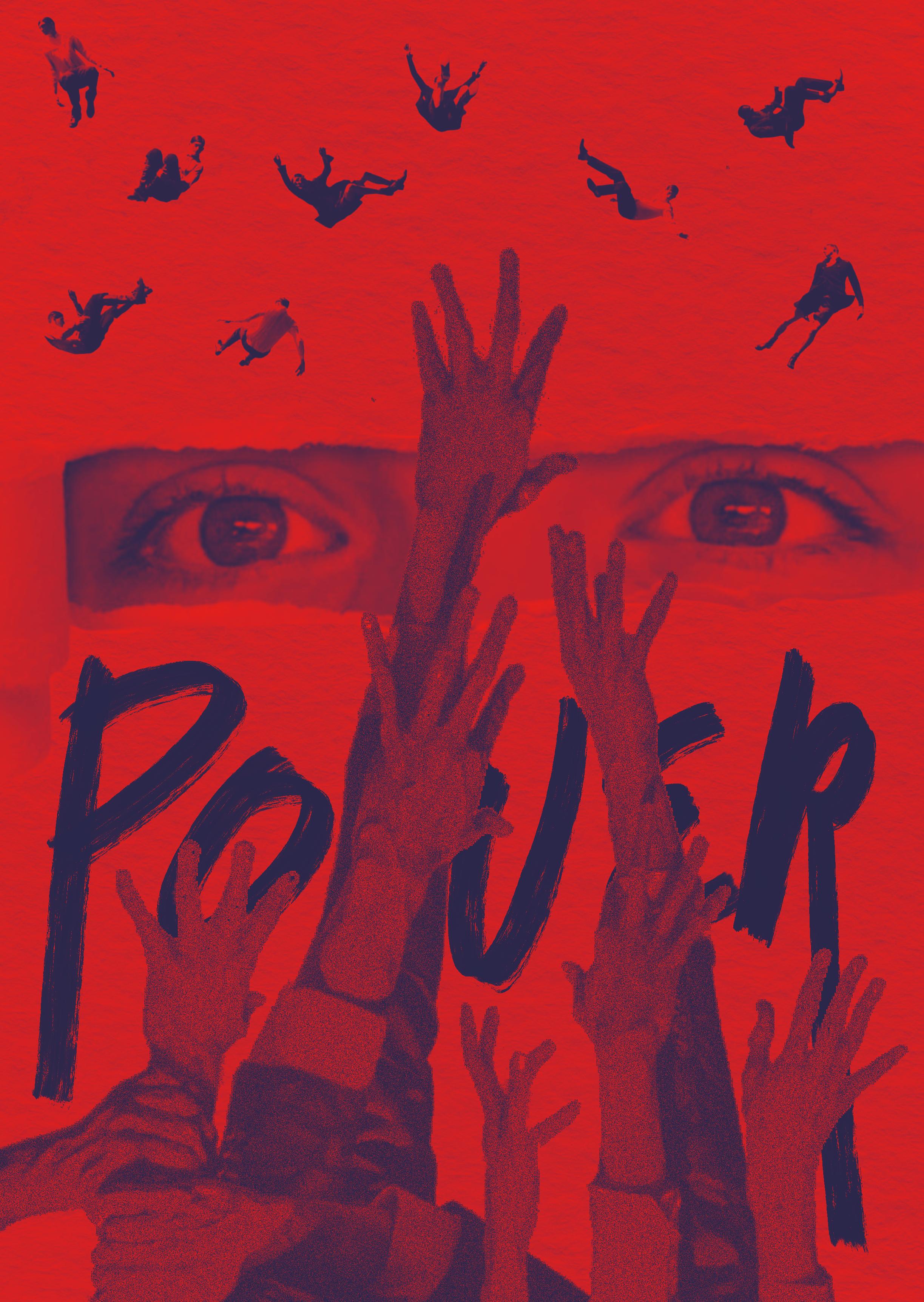
60.
Art by Cynthia Weng

61.
Art by Max Macfarlane
Art by Amanda Lim
Research SpotlightSolar Racing Aerodynamics
with Robin Hodda
By Daniel Pavlich
ANU is full of exciting research that is often at the very cutting edge of its respective field. Unfortunately, if you aren’t directly involved or know someone that is, it is highly likely that you won’t hear anything about it. That stops now.

What is ANU Solar Racing?
ANU Solar Racing is a completely student-run team which designs, researches, funds and builds a completely solar-powered race car to compete in the biennial World Solar Challenge. This challenges teams from all over the globe to race their solar cars 3022 km on public roads from Darwin to Adelaide.
Robin Hodda, the head of aerodynamics for ANU’s Solar Racing team, explains how to harness the powerful forces of nature to design, build and race a solar car from Darwin to Adelaide.
The team is made up of a business branch, an operations branch and a technical branch. It’s a diverse group of students with people from all 7 of the academic colleges at ANU, all with the same passion for solar racing. Solar racing is all about automotive efficiency taken to the extreme in every facet. Pushing the envelope on solar cell efficiency, electronic control, tires, motors, weight, and most of all: aerodynamics.
My Solar Car Journey
I originally joined the team part way through my first semester at ANU in 2019 to revamp the team website. As the year went on and the 2019 race became ever closer, I was drafted in as an extra set of hands to help finish the car build, which I adored. I was fortunate enough to go with the team to the 2019 World Solar Challenge and was completely won over. Despite not having any formal background in it, I joined the mechanical team in 2020 and began design work on the new car. As aerodynamic drag on the car is the largest consumer of power, a major challenge is to reduce the drag as much as possible to make the car go faster.
The process of designing and developing the chassis (the structural frame of the car) had challenges at every step, so initially we looked back at all the solar cars from the last 30 years. People have tried all sorts of wacky things. It became clear to us that there were three general layouts that have been successful: a trimaran with two wheels at the front and a pod at the rear for the driver; a catamaran, with the driver on one side and four wheels, or a monohull where the driver and wheels are all in the same shape.
62.
The process of trying to work out which of those three would be best was incredibly stressful but taught me about how to deal with complexity, uncertainty and how to structure decisions to be as robust as possible. We had to consider the placement of wheels, battery, driver, solar cells and other major components so that the chassis was as streamlined as possible while still stable and lightweight. After drawing some mock-ups of the layouts, we concluded that a monohull would either be too narrow to be stable enough, or so wide that any aerodynamic advantage would be lost.
This left a decision between catamaran and trimaran, and ultimately, we found the reduction in weight and complexity of having one less wheel in a trimaran was beneficial. Hence, ‘Spirit’, the trimaran was born.
The Importance of Aerodynamics
Aerodynamics is the study of the movement or flow of air around shapes. It’s perhaps most obviously useful in planes, allowing a hundred-tonne aircraft to take flight. However, the application of aerodynamics is incredibly broad; it is used in air conditioners, cars, turbines in power plants, rockets and skyscraper design.
For solar cars, there is only so much solar power that can be collected, so using that power most efficiently helps maintain a higher speed than the competition. For reference, solar cars can go up to 90km/hr using less power than a toaster! The power that is required to push through the air increases with the cube of the car’s speed. This means that to go twice as fast, it requires 8x the power, making the car’s aerodynamics the single largest contributor to performance!
Whilst there is a mathematical description of air movement (the Navier-Stokes equations), it is basically impossible to completely solve when applied to anything in the real world. Therefore, my job becomes a game of leveraging carefully developed empirical theory and combining it with physical tests and simulations.
One of the key challenges we are still working on is finding a good balance between the accuracy of the simulation, which is tied to how fine the mesh is, and the simulation length. The finer the mesh is, the longer it takes to run. The simulations we run range from a couple of hours to a week, but it is possible for this to become months in search of even higher fidelity. Understanding this balance to try and maximise the useful information gained in a limited amount of time has led to a lot of research into the tradeoffs associated with shorter simulations.
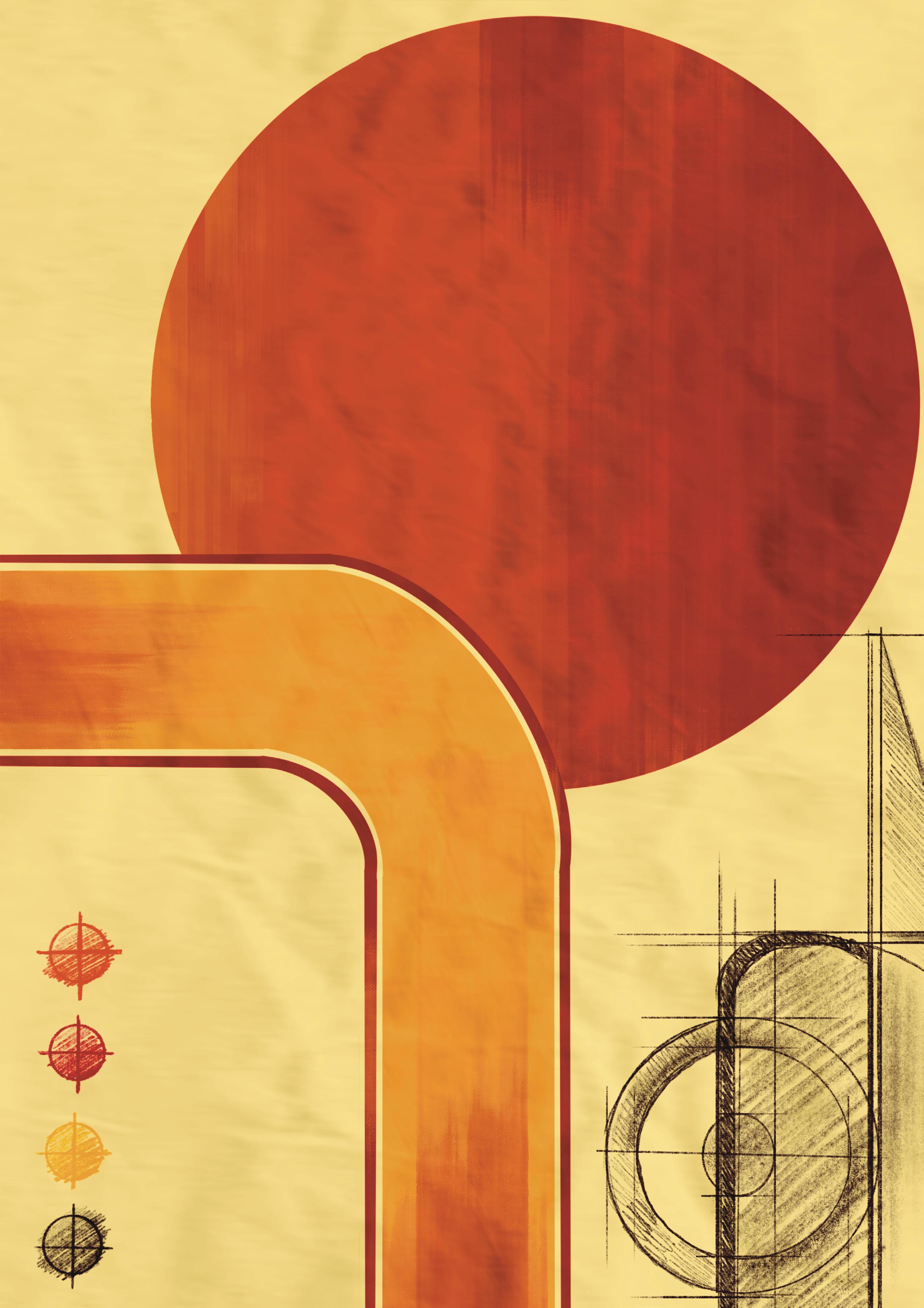
63.
Art by Amanda Lim
Art by Amanda Lim
Increasing the mesh density in key places is vital (up to a point) to help capture the finer details of airflow in the areas that have the most impact on aerodynamics. However, there are some positions where there won’t be many changes, in which case you can get away with larger cells to reduce the simulation time.

Overall CFD is incredibly useful for the team because it allows us to understand the airflow around the solar car and test designs we have come up with to see if they provide any improvement without actually having to build them. For example, refining the wing design to minimise lift given its proximity to the ground, which is vital to create enough downforce to stop the car taking off!

The solar car team is always on the lookout for people who want to get involved in any arm of the organisation. Their main recruiting windows are at the beginning of each semester, but follow them on social media to keep up with how the team performs in October this year!
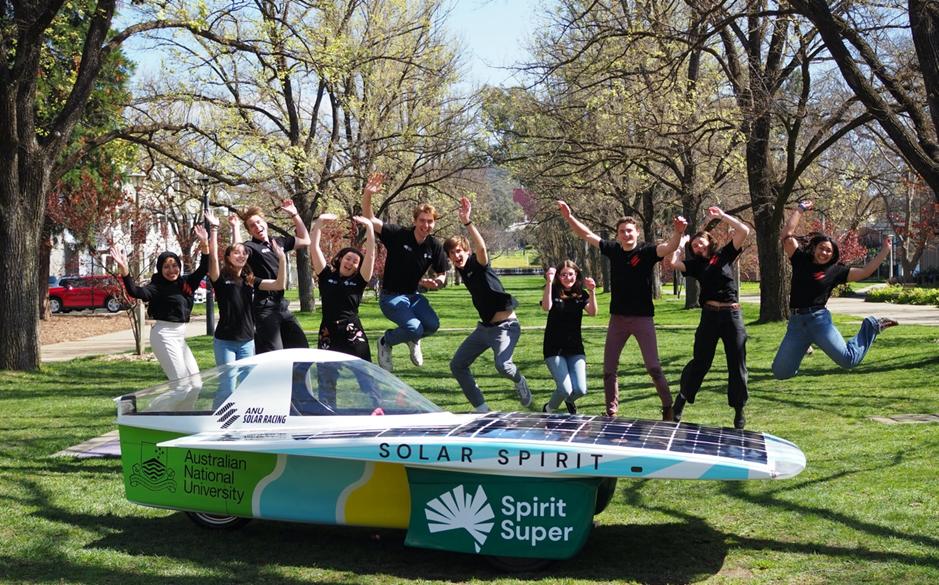
64.
Streamlines from a CFD simulation of a monohull car
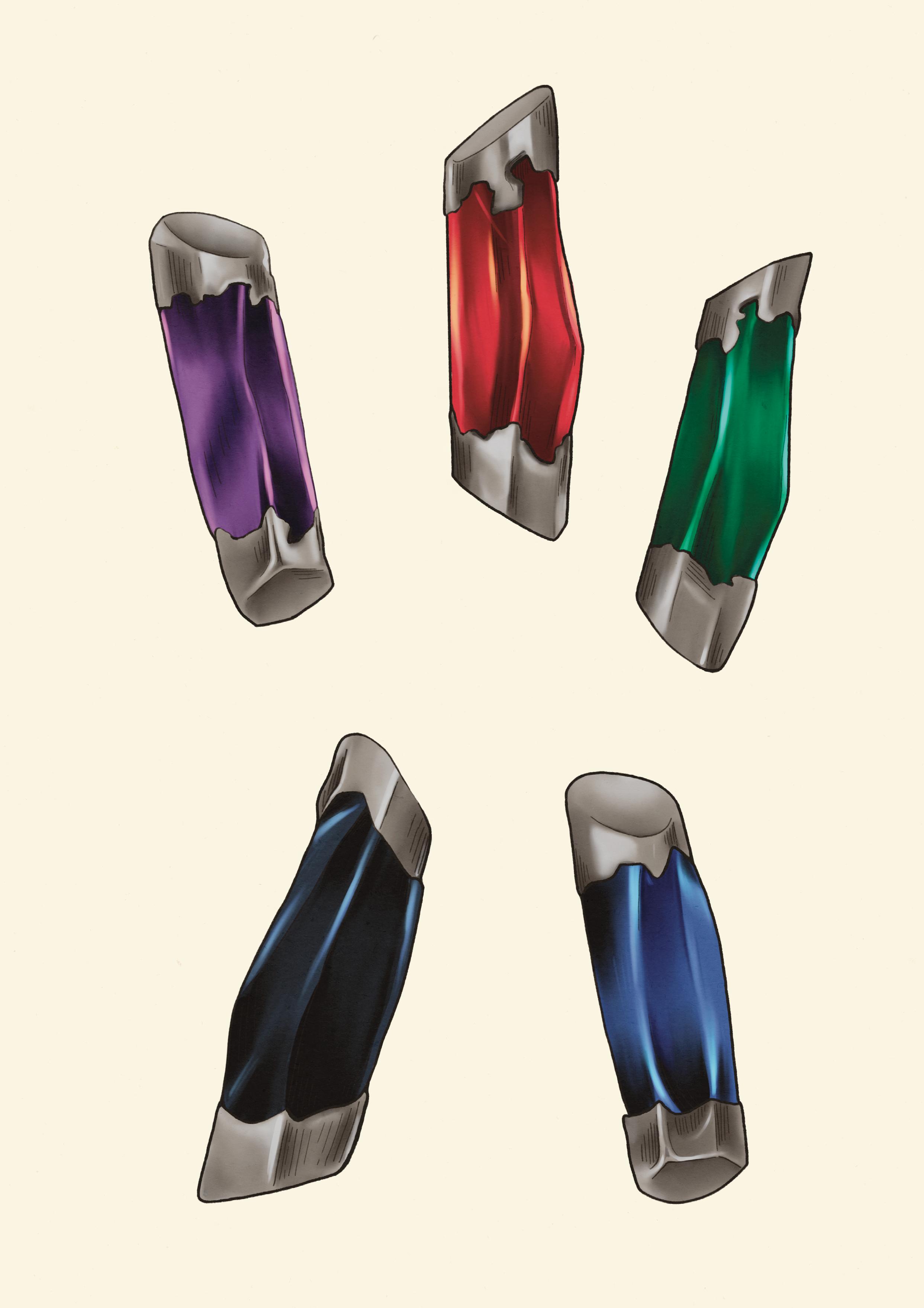

CONTRIBUTE TV art News Radio content news@woroni.com.au art@woroni.com.au television@woroni.com.au radio@woroni.com.au write@woroni.com.au
We would like to acknowledge the traditional custodians of the land on which Woroni operates, the Ngunnawal and Ngambri peoples. We pay our respects to Elders past and present: their land was forcibly stolen, and sovereignty was never ceded.

Indigenous Peoples globally have suffered at the hands of colonial powers for centuries. Imperialist nations, including Australia, have built their influence and ‘success’ off the back of sickening exploitation and greed. Australia has benefited from the trade of slaves, the dispossession and genocide of First Nations peoples, and the unsustainable extraction of resources from the environment. The forces and institutions of power valorised by colonial Australia, such as the police, the judiciary, Westminster government, and capitalism, depend on the racial oppression of First Nations Australians. There is no measure non-Indigenous Australia can pursue to undo such gross abuse of land and people. It is the responsibility of non-Indigenous Australians to listen to and meet the demands of First Nations people to rectify historical and present injustices.
The name Woroni, which means “mouthpiece”, was taken from the Wadi Wadi Nation without permission. Consultation with First Nations people suggested that Woroni continue to use the word, provided we acknowledge the theft, and continue to strive for better reconciliation in future. Woroni aims to provide a platform for First Nations students to hold the University, its community, and ourselves accountable.
This land always was, and always will be, Aboriginal land.


















































 Art by Jasmin Small
Art by Jasmin Small














